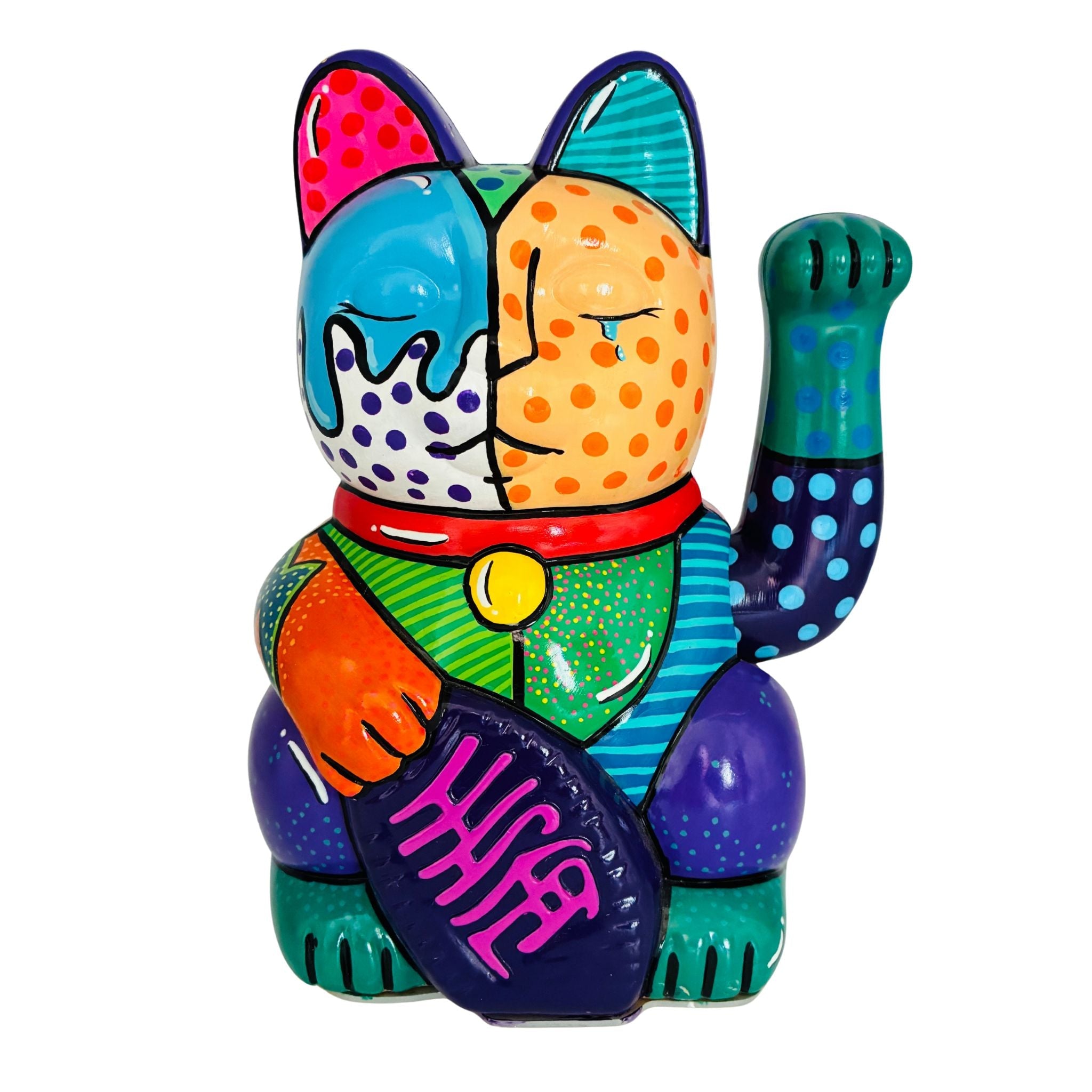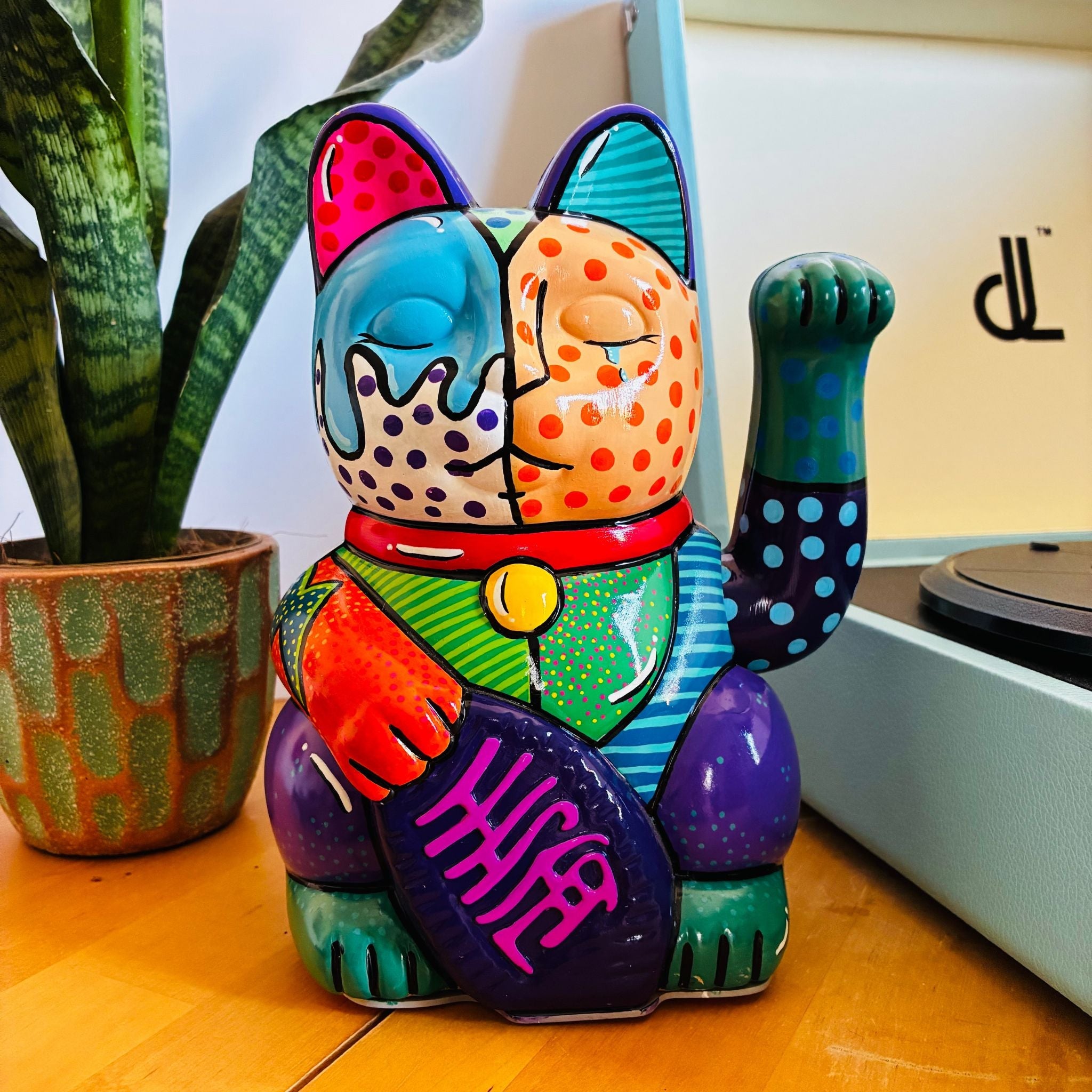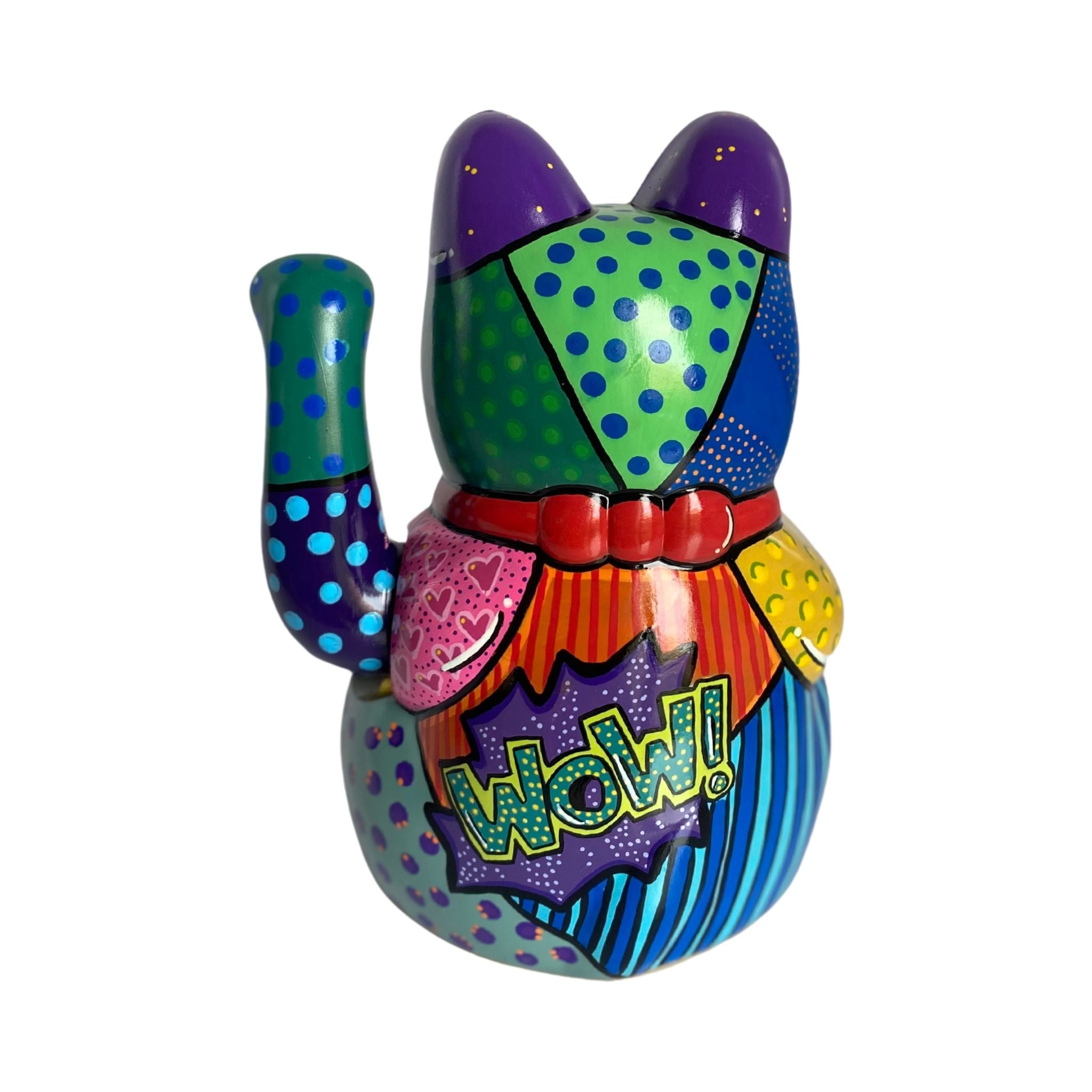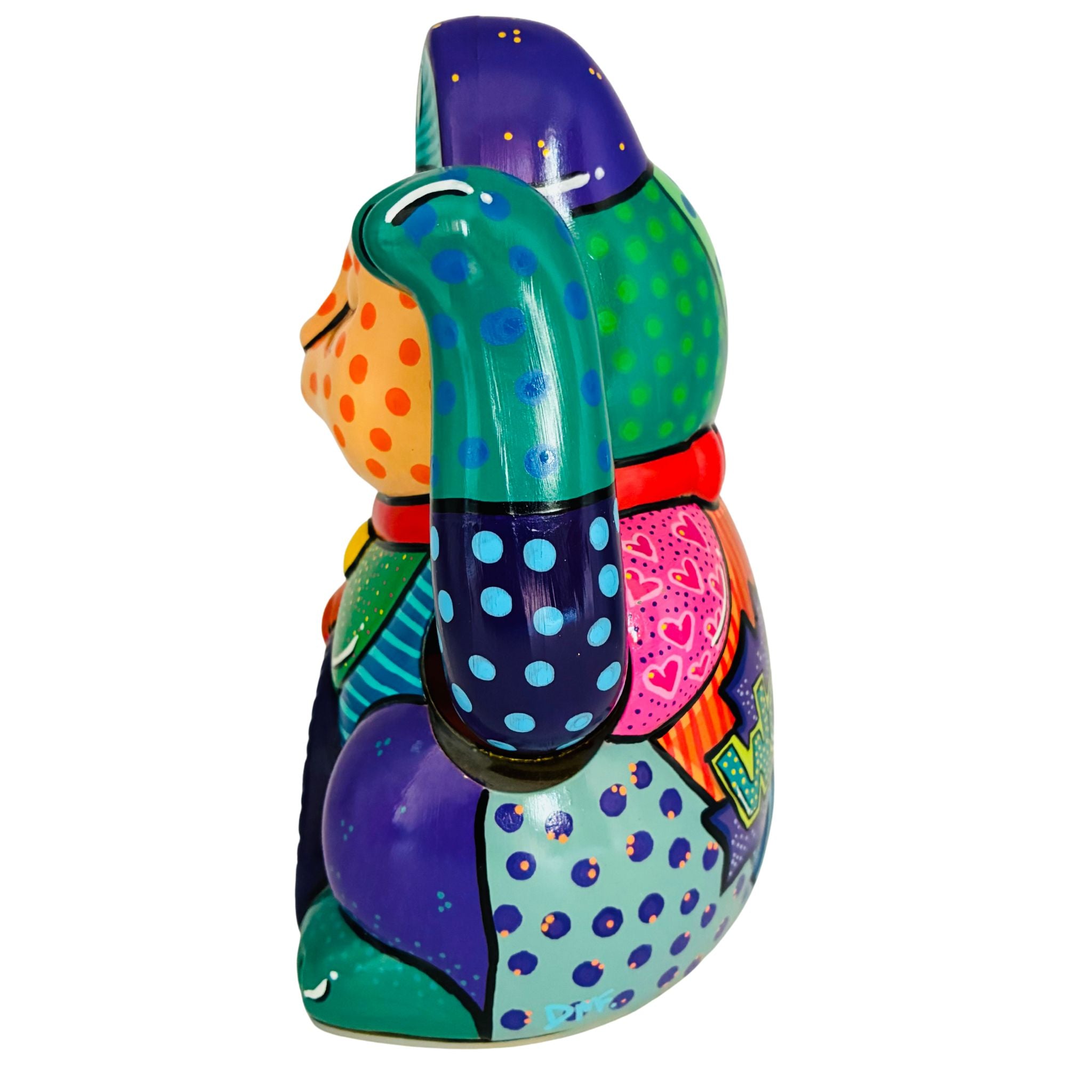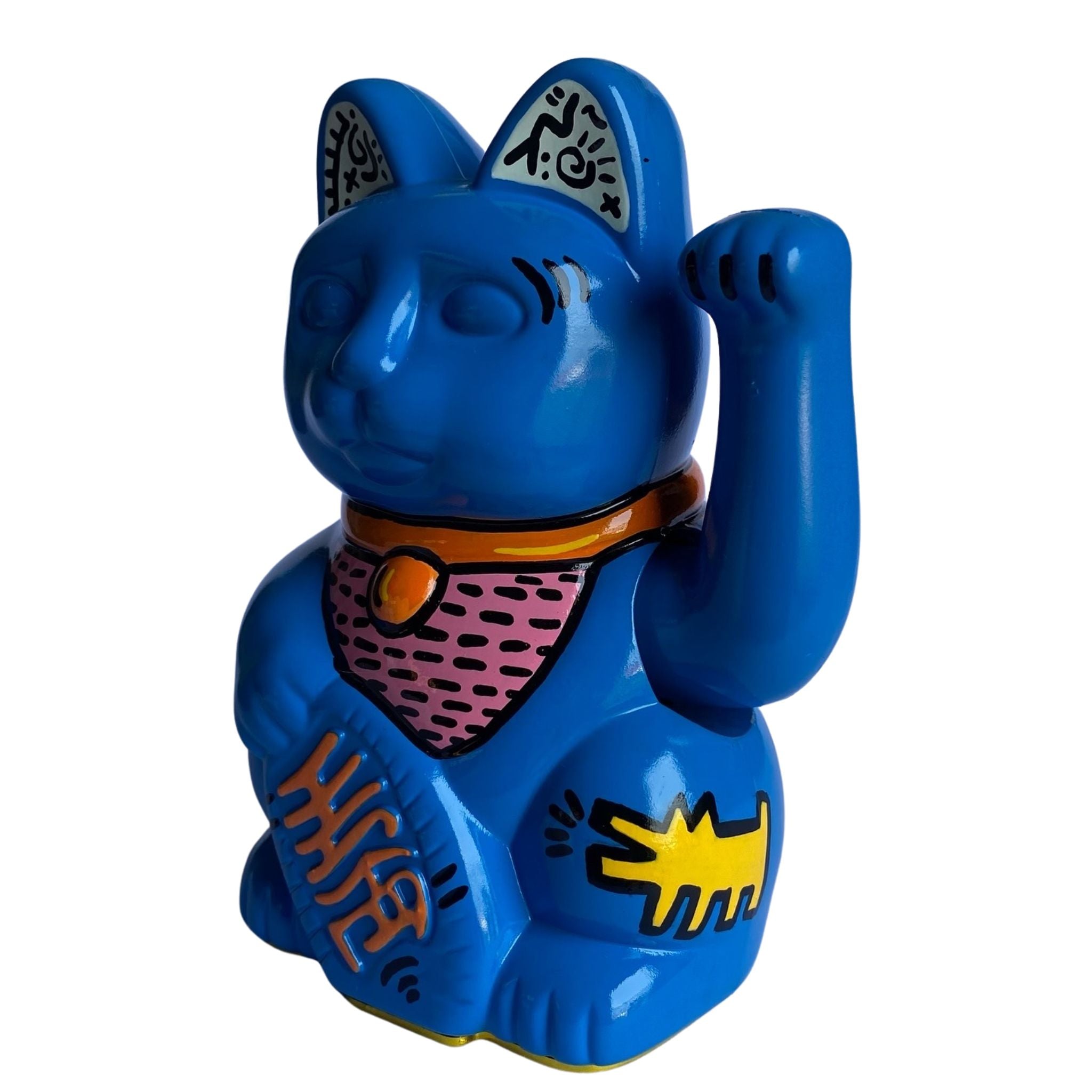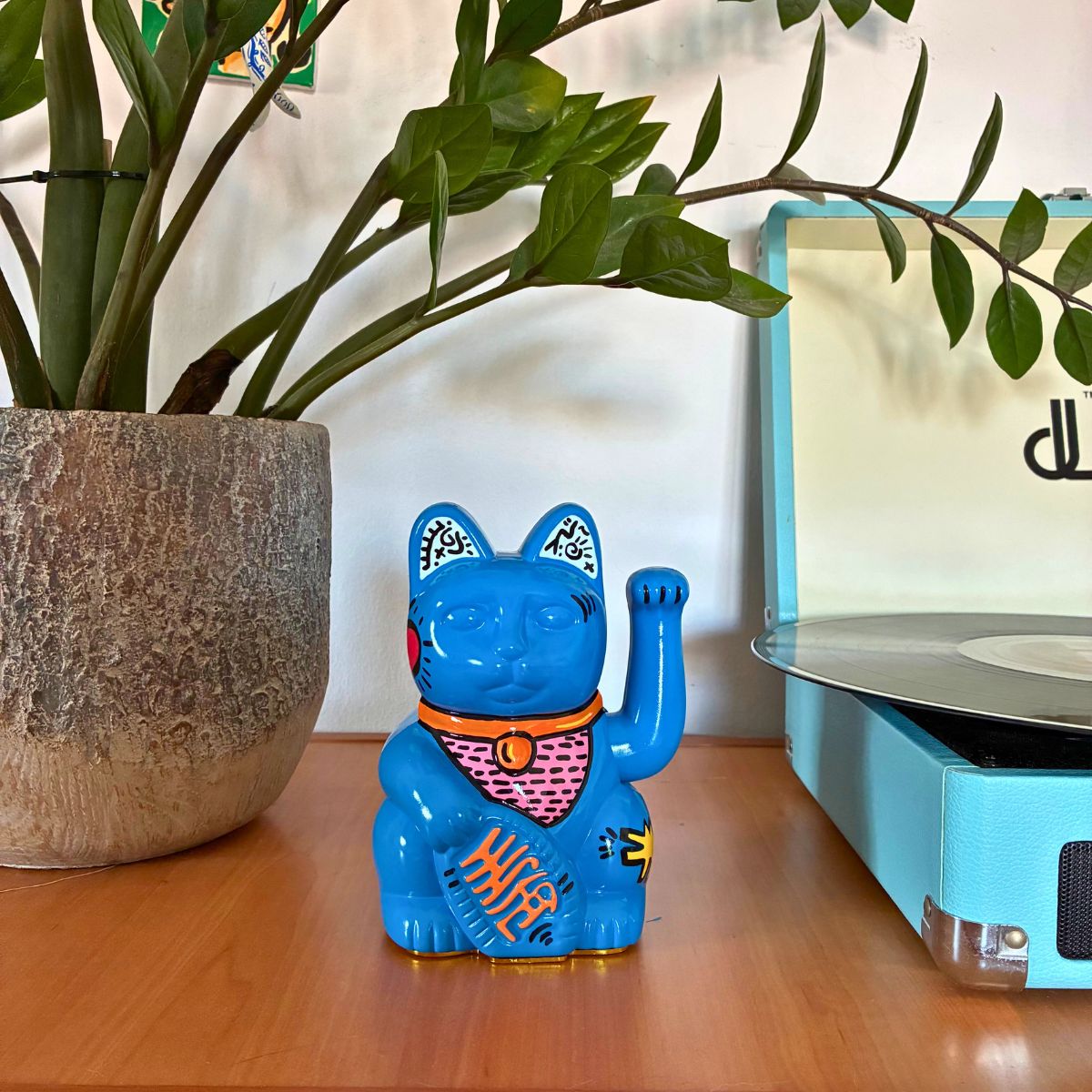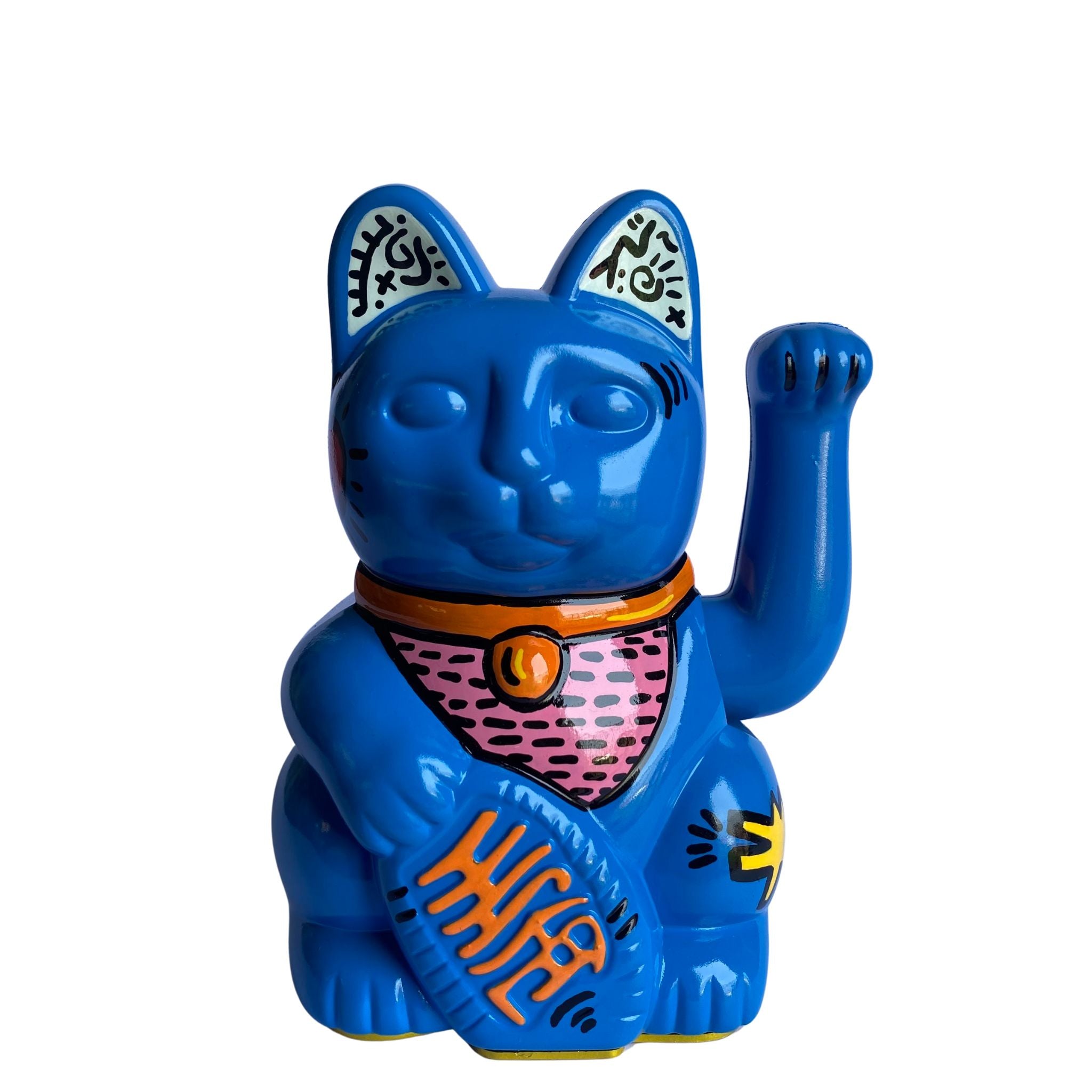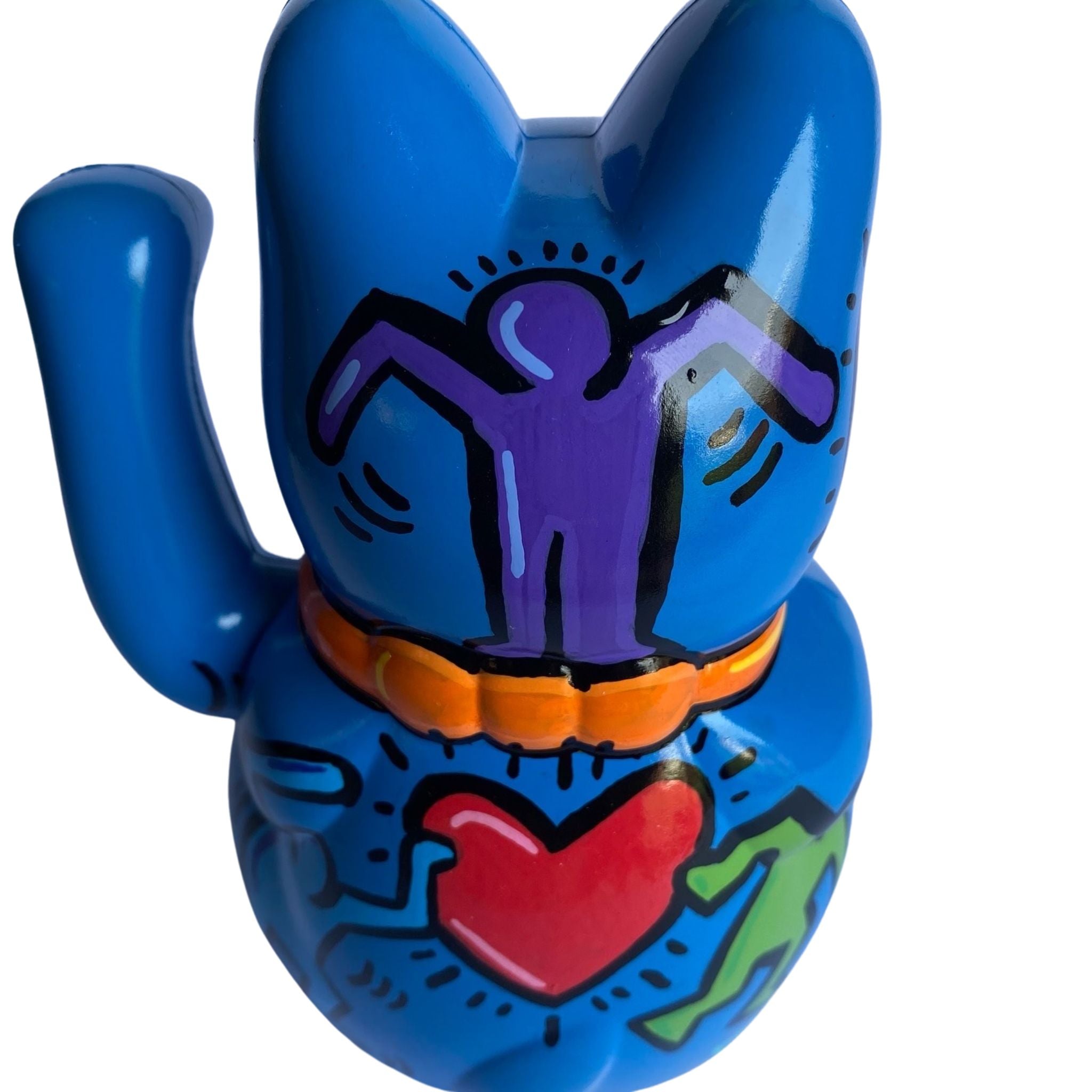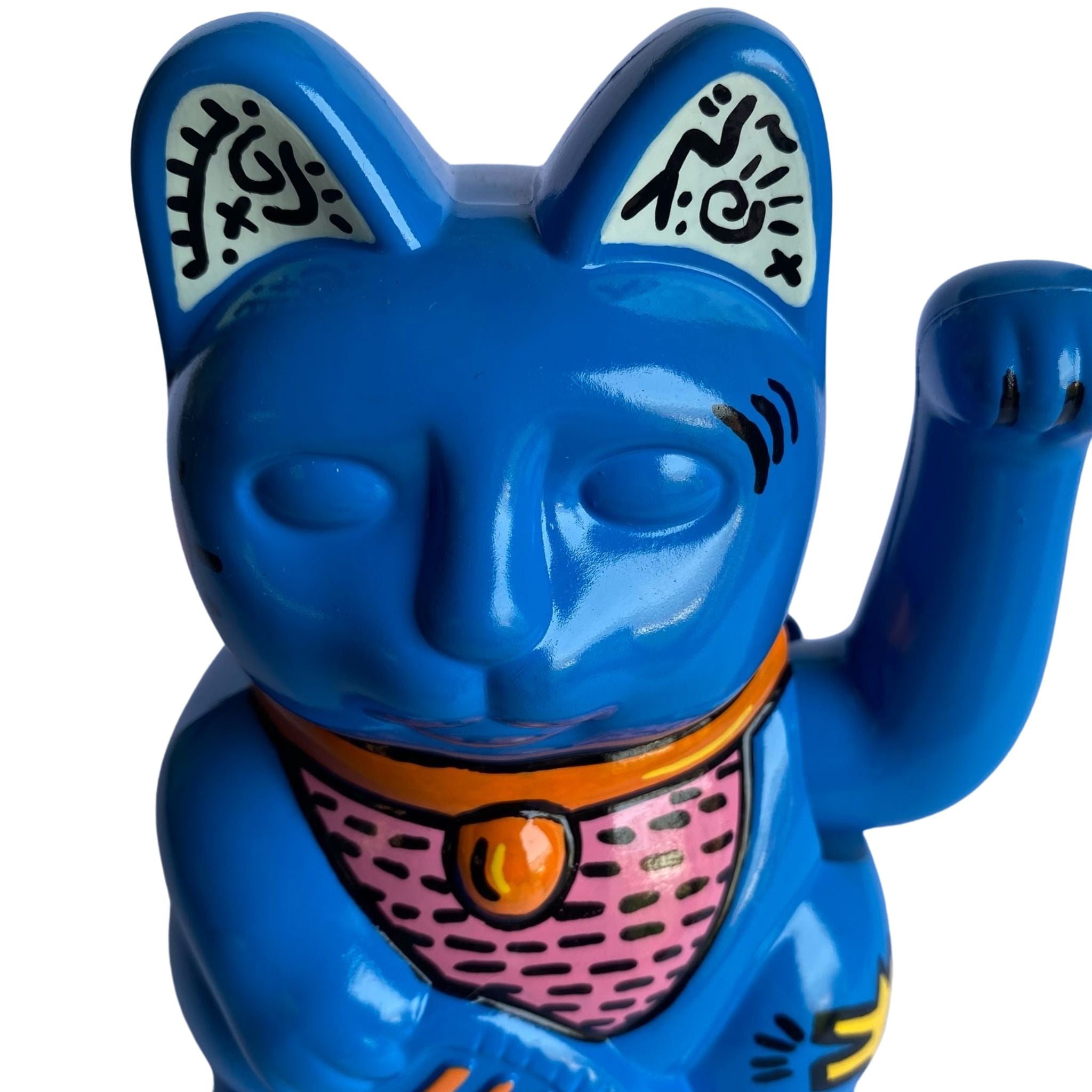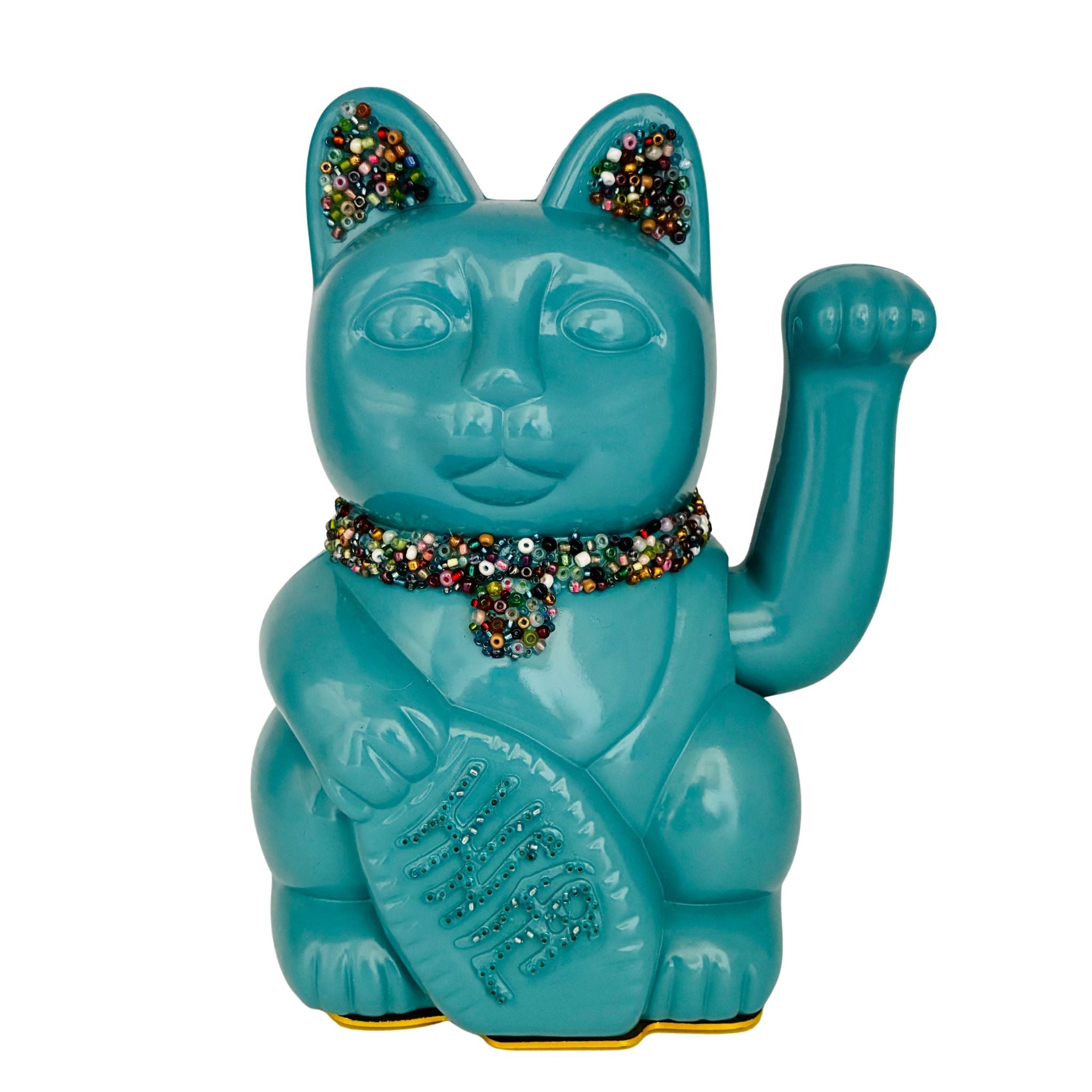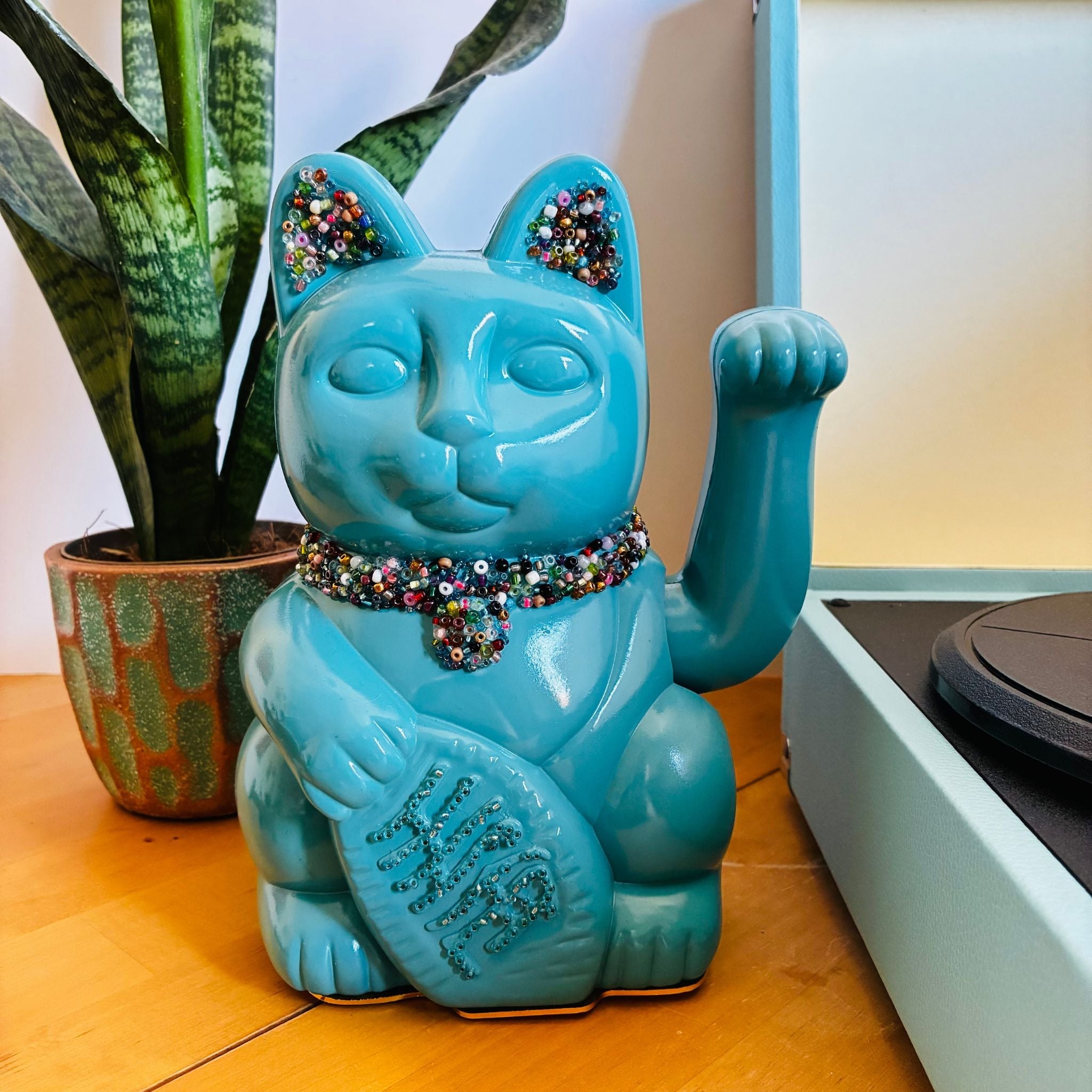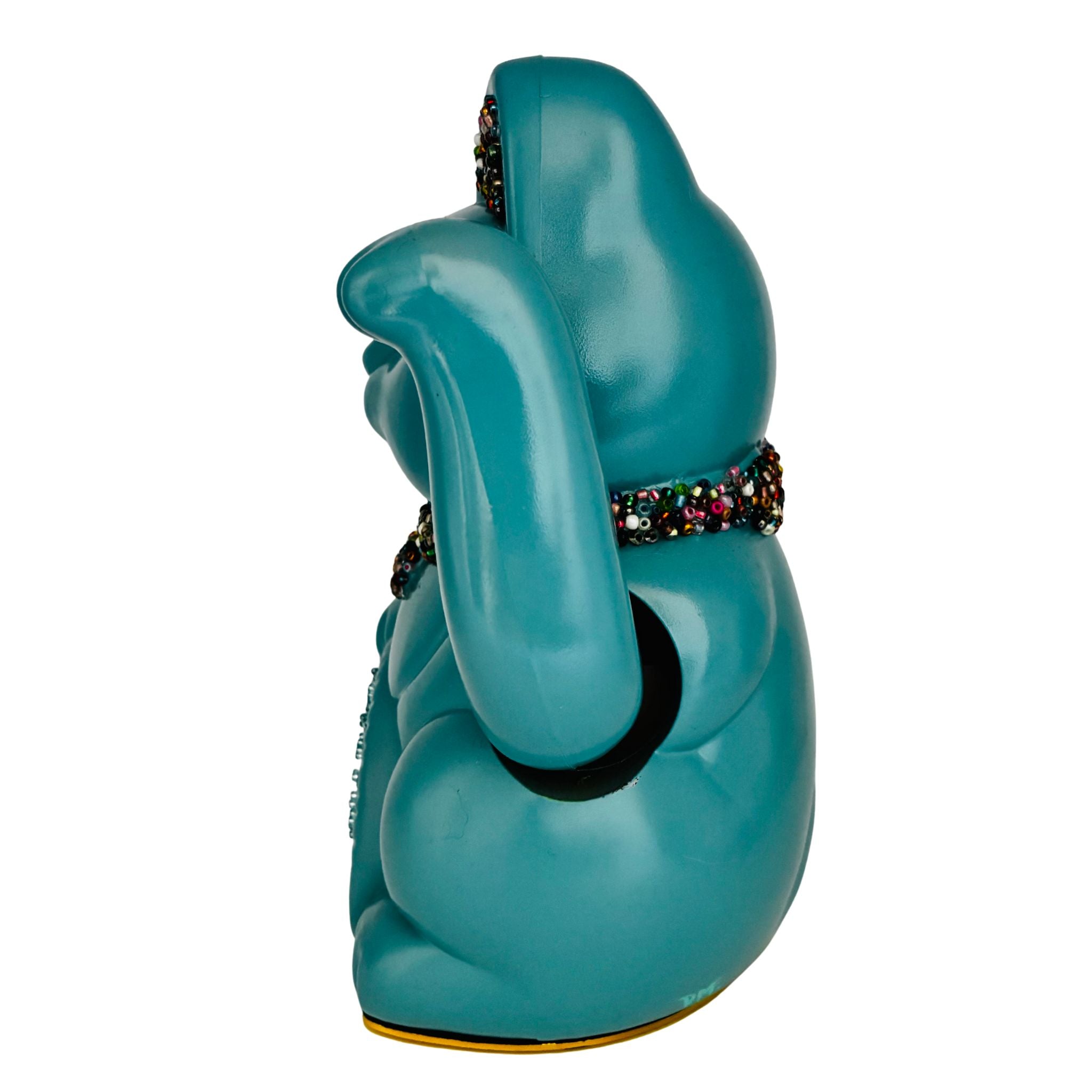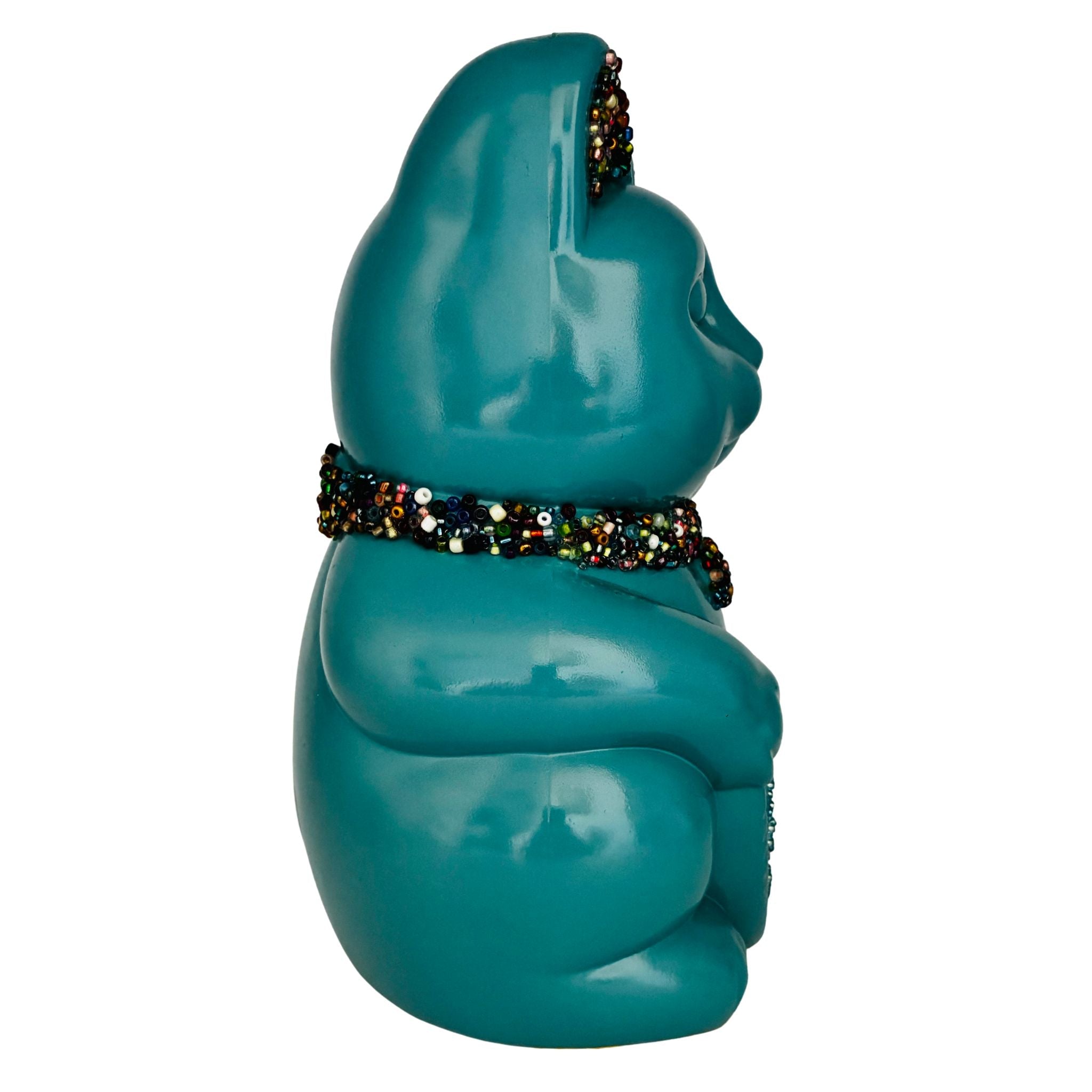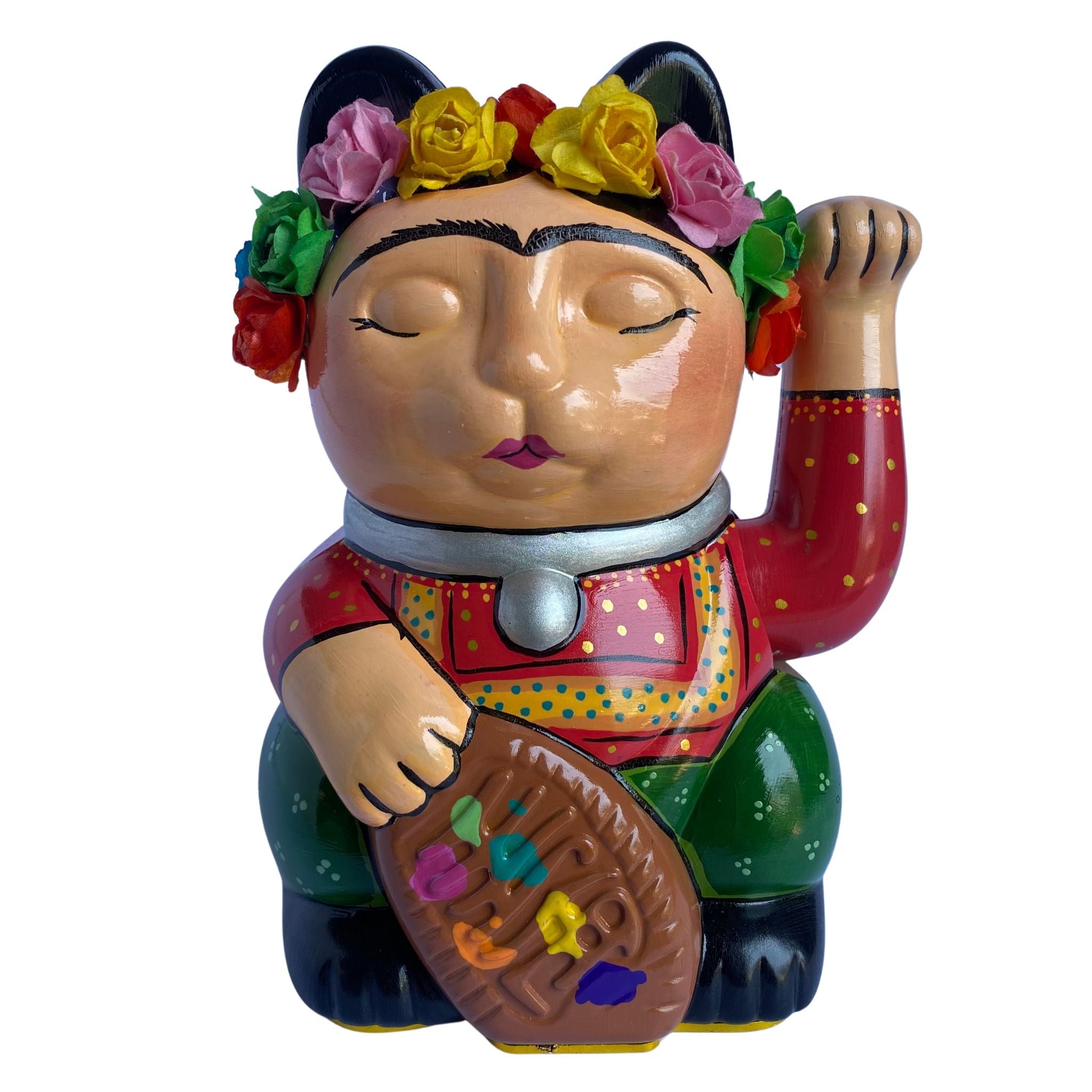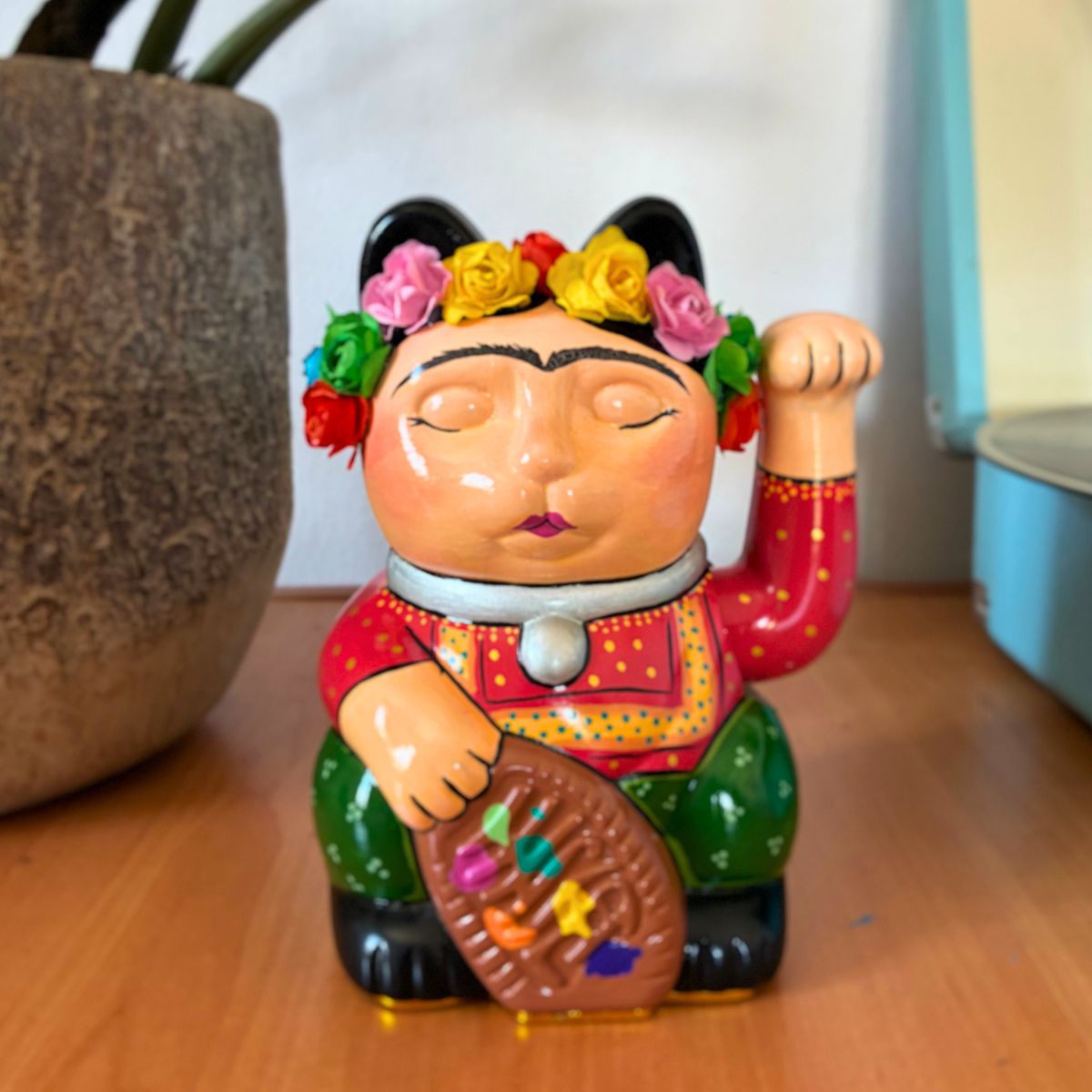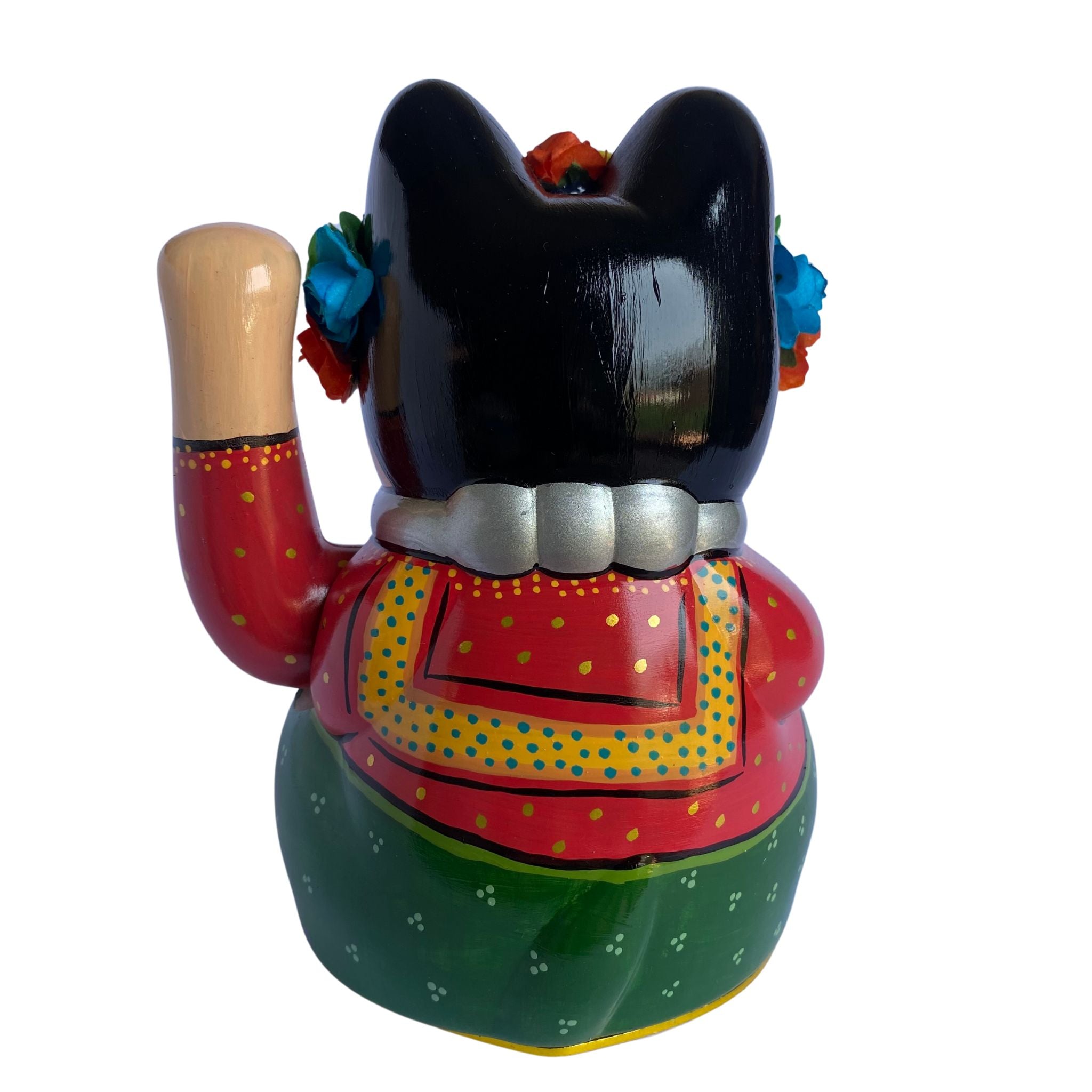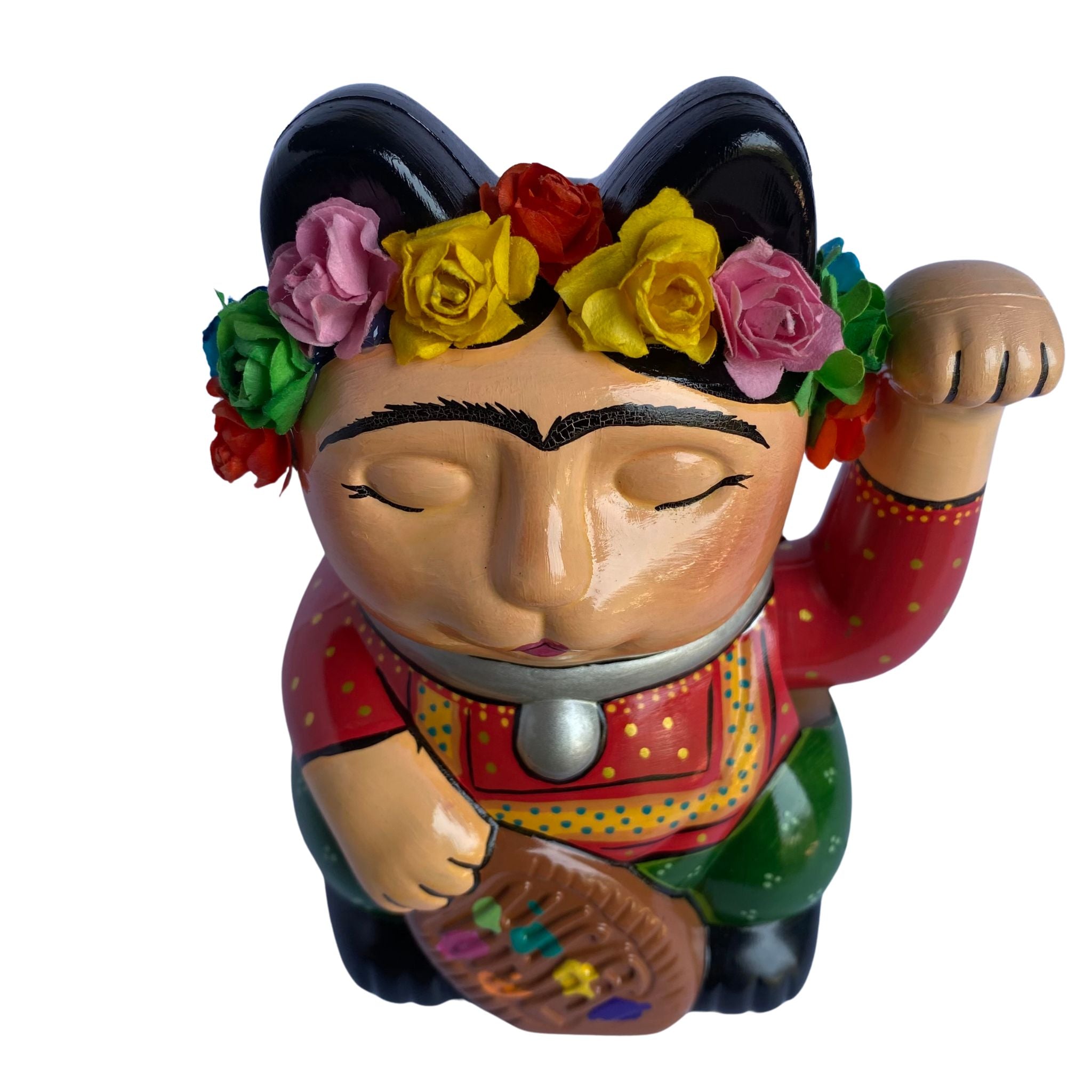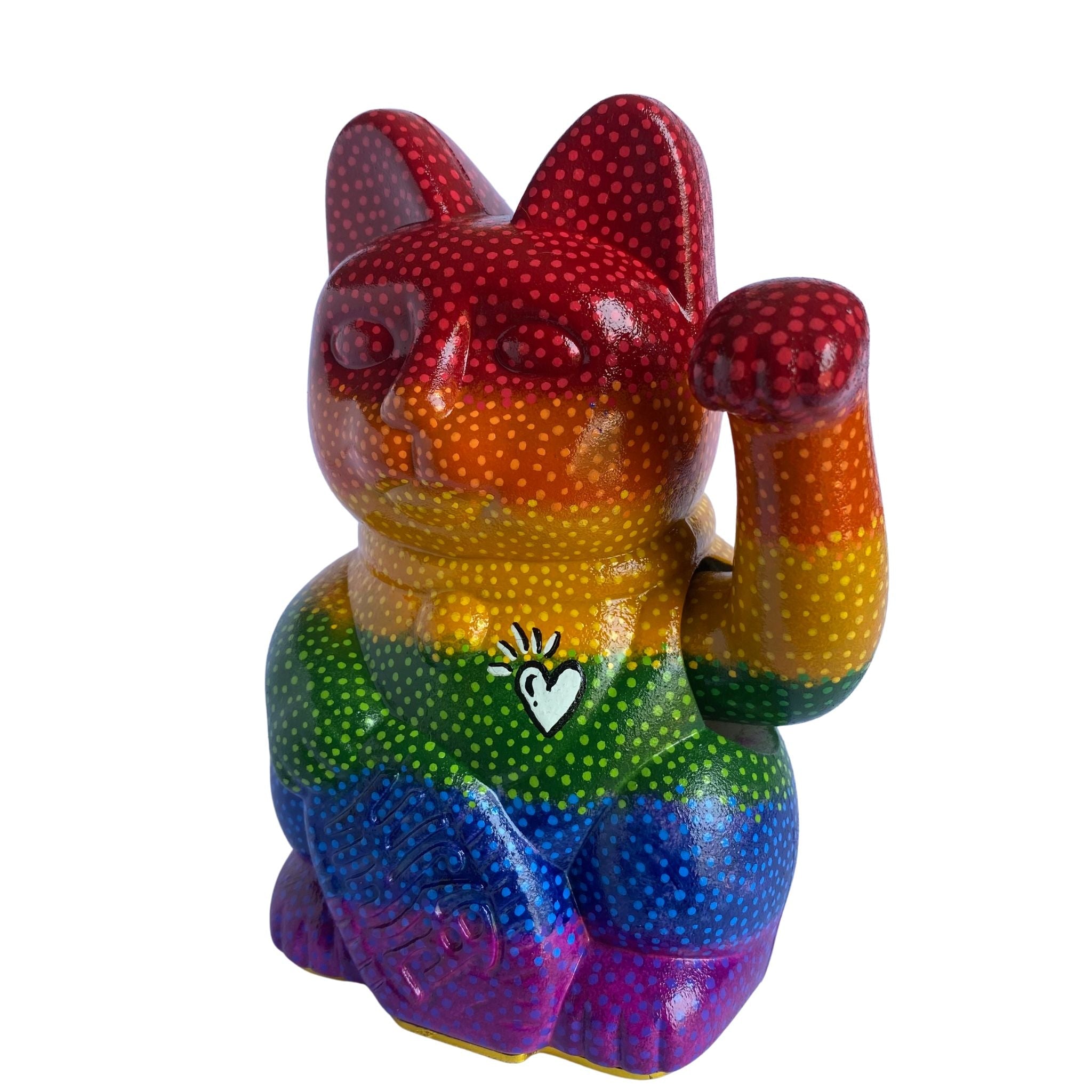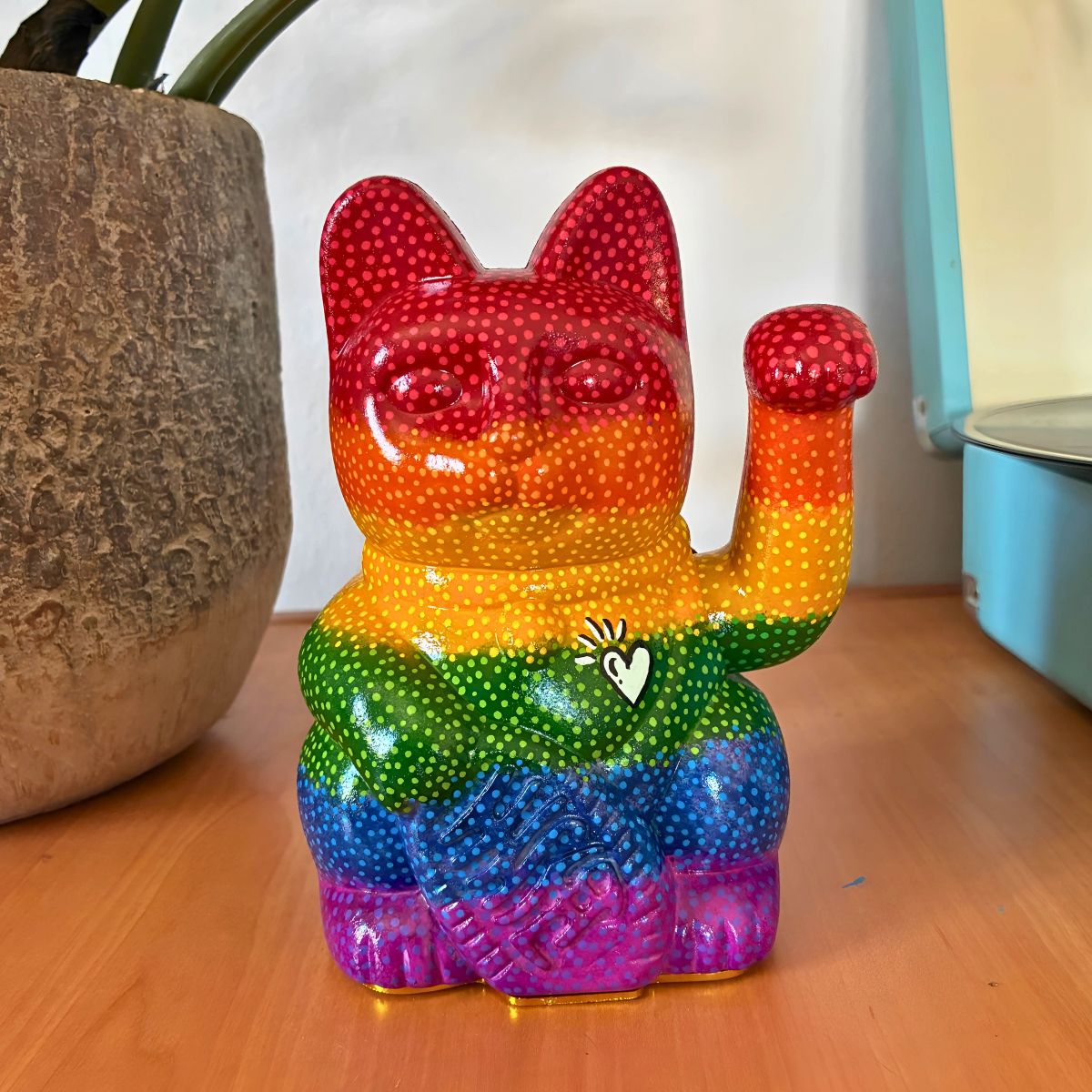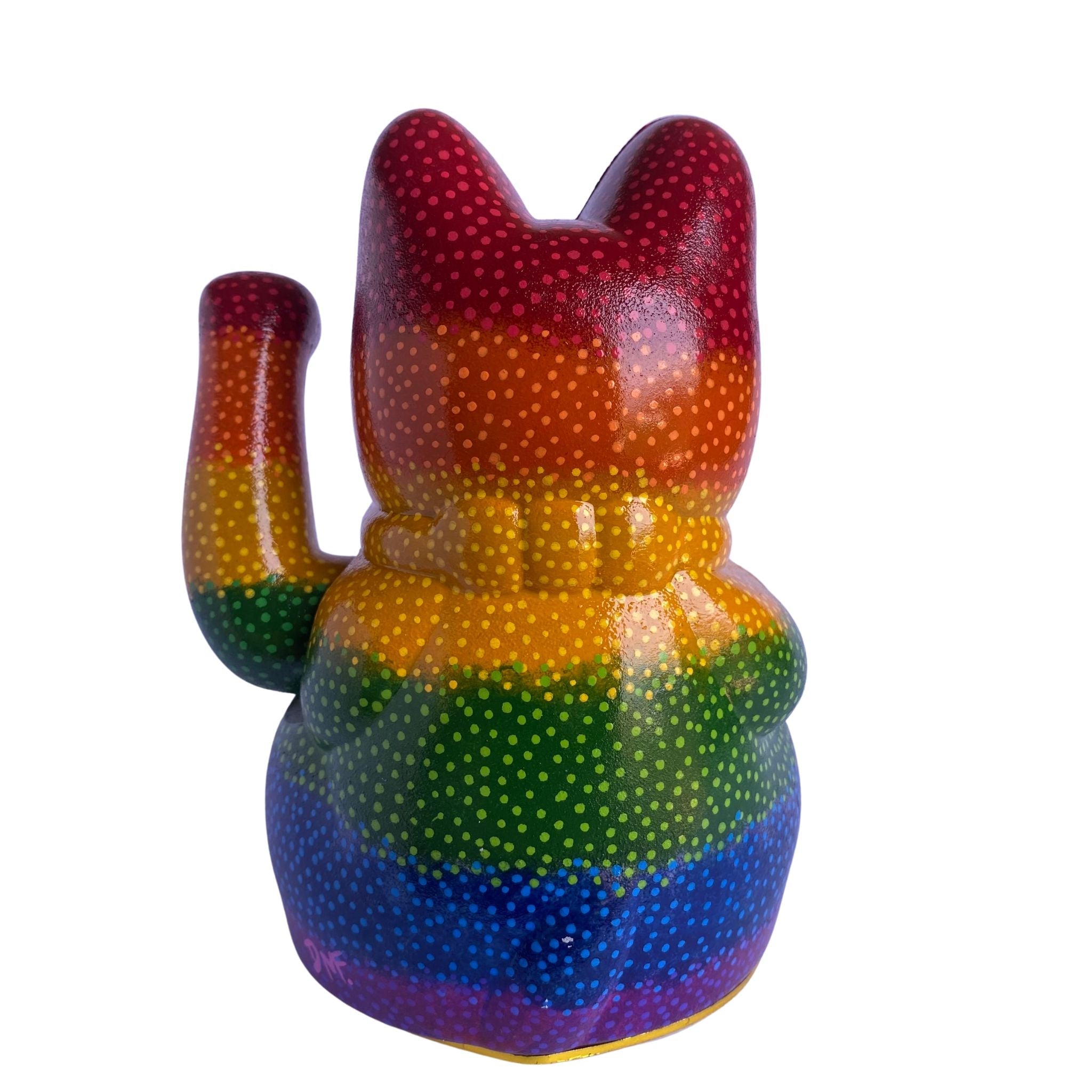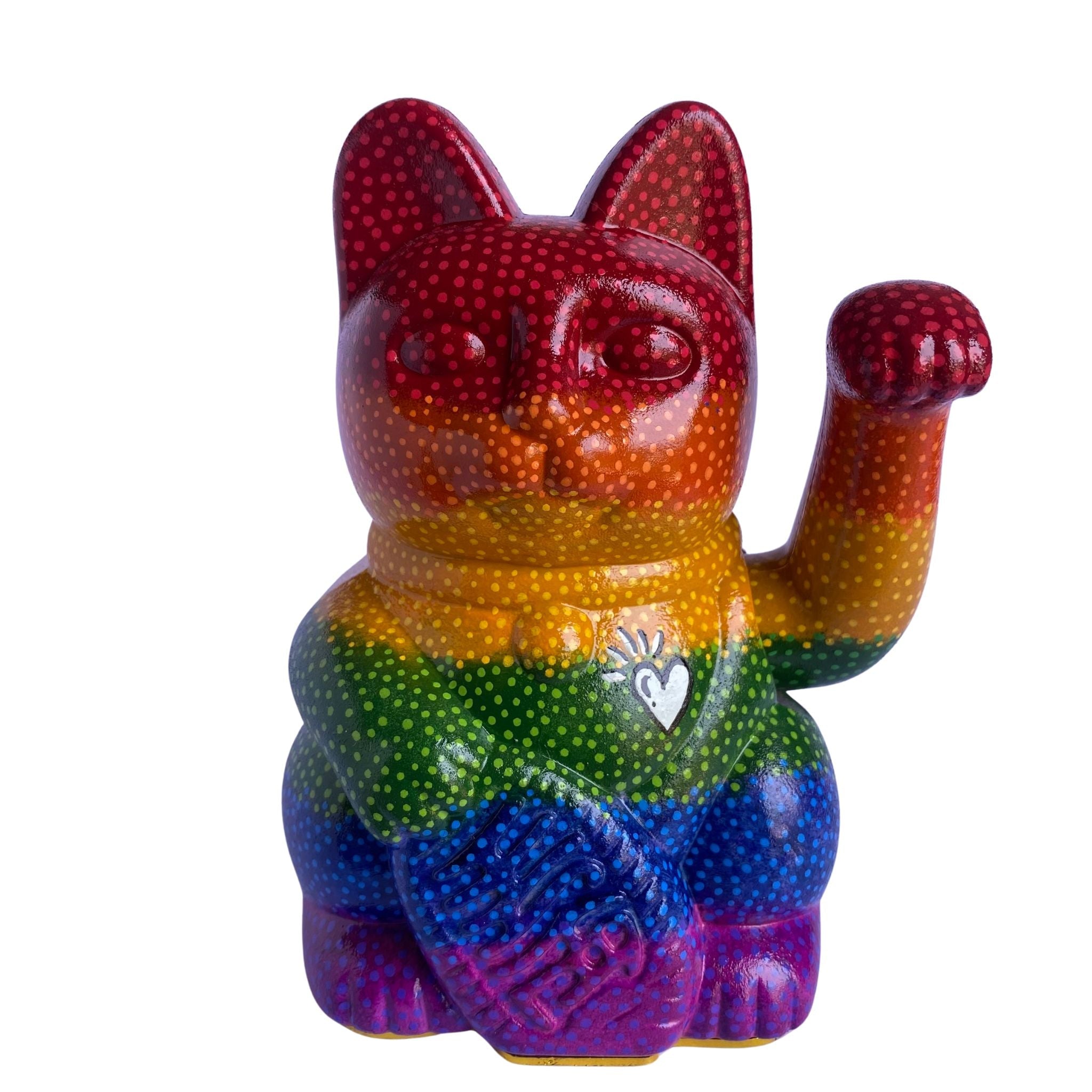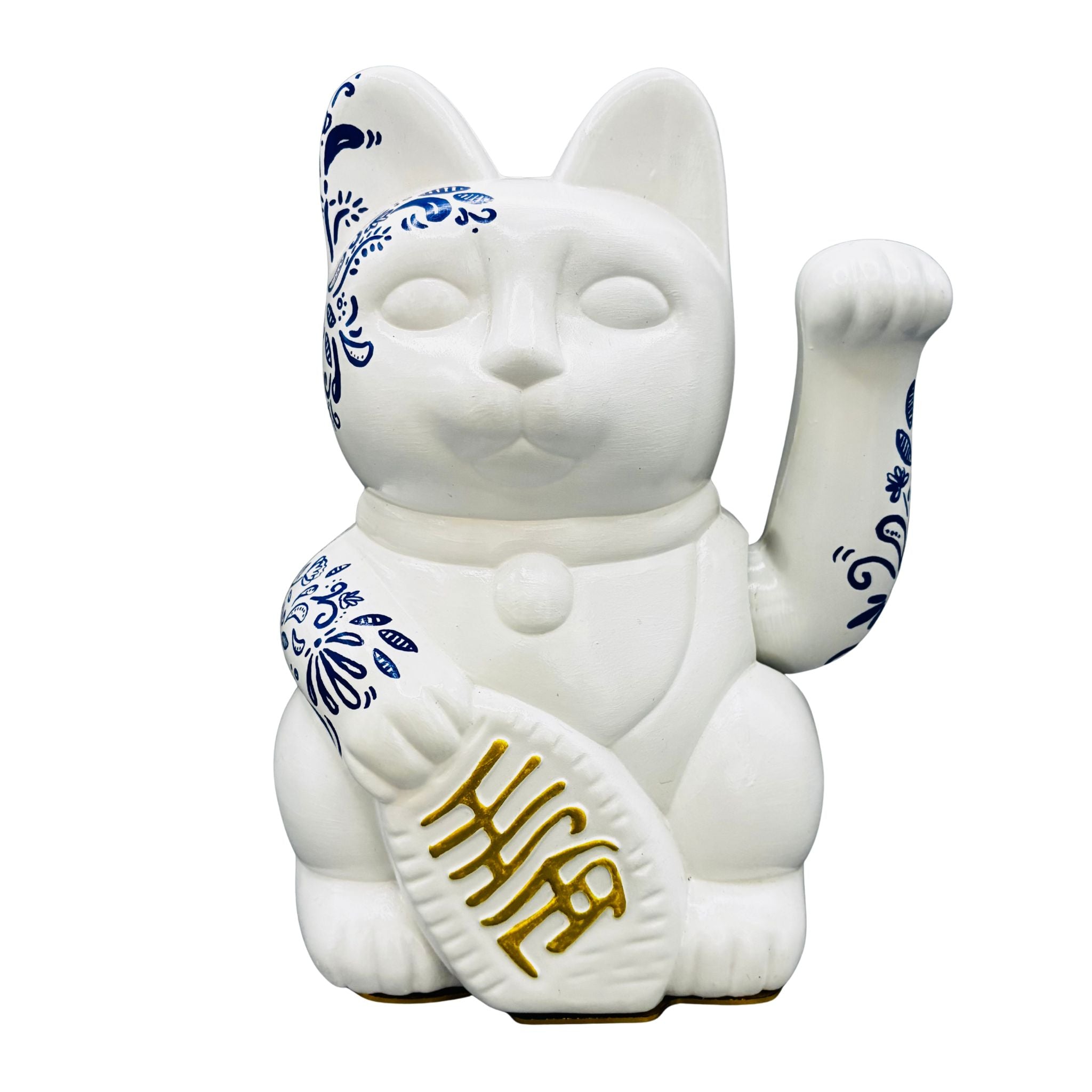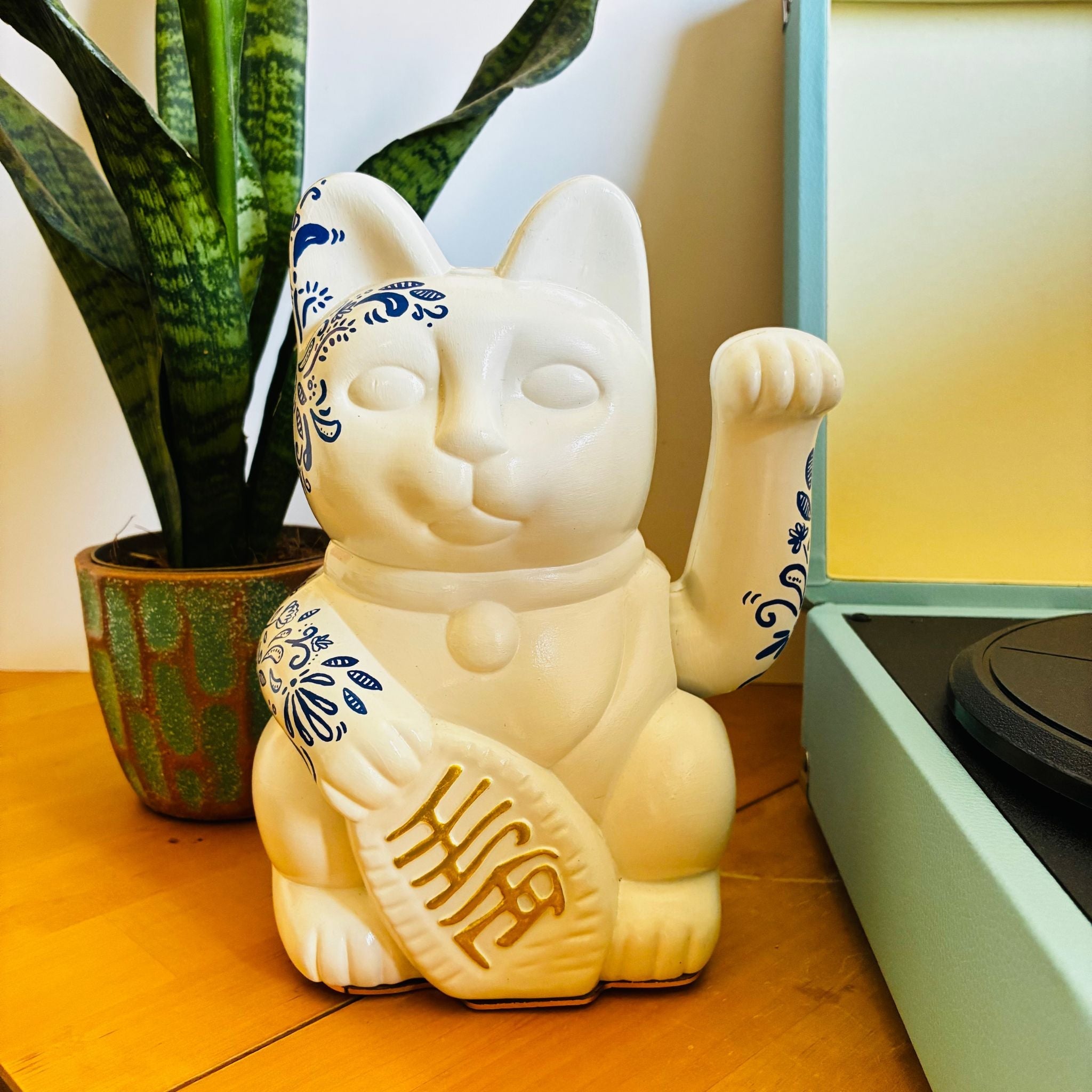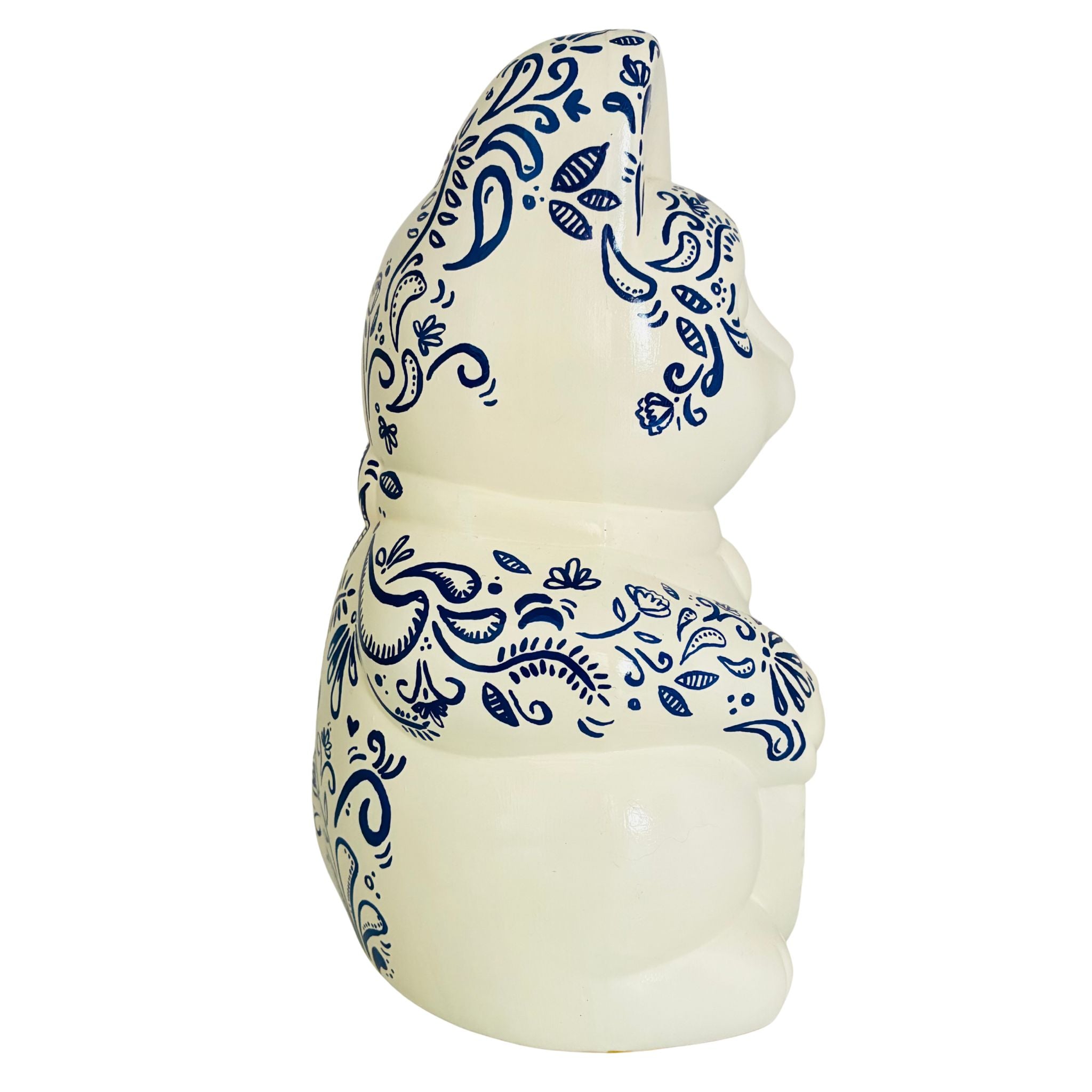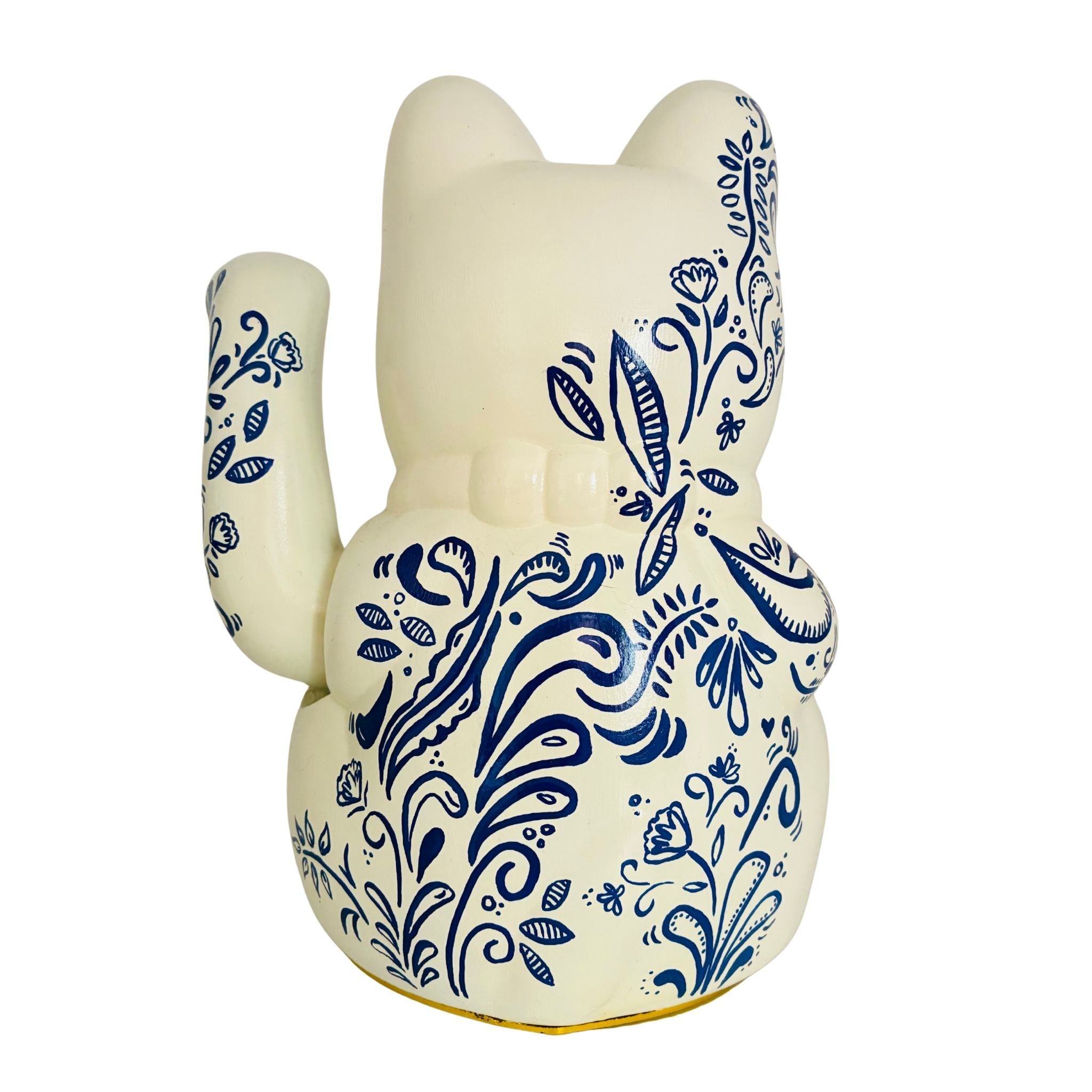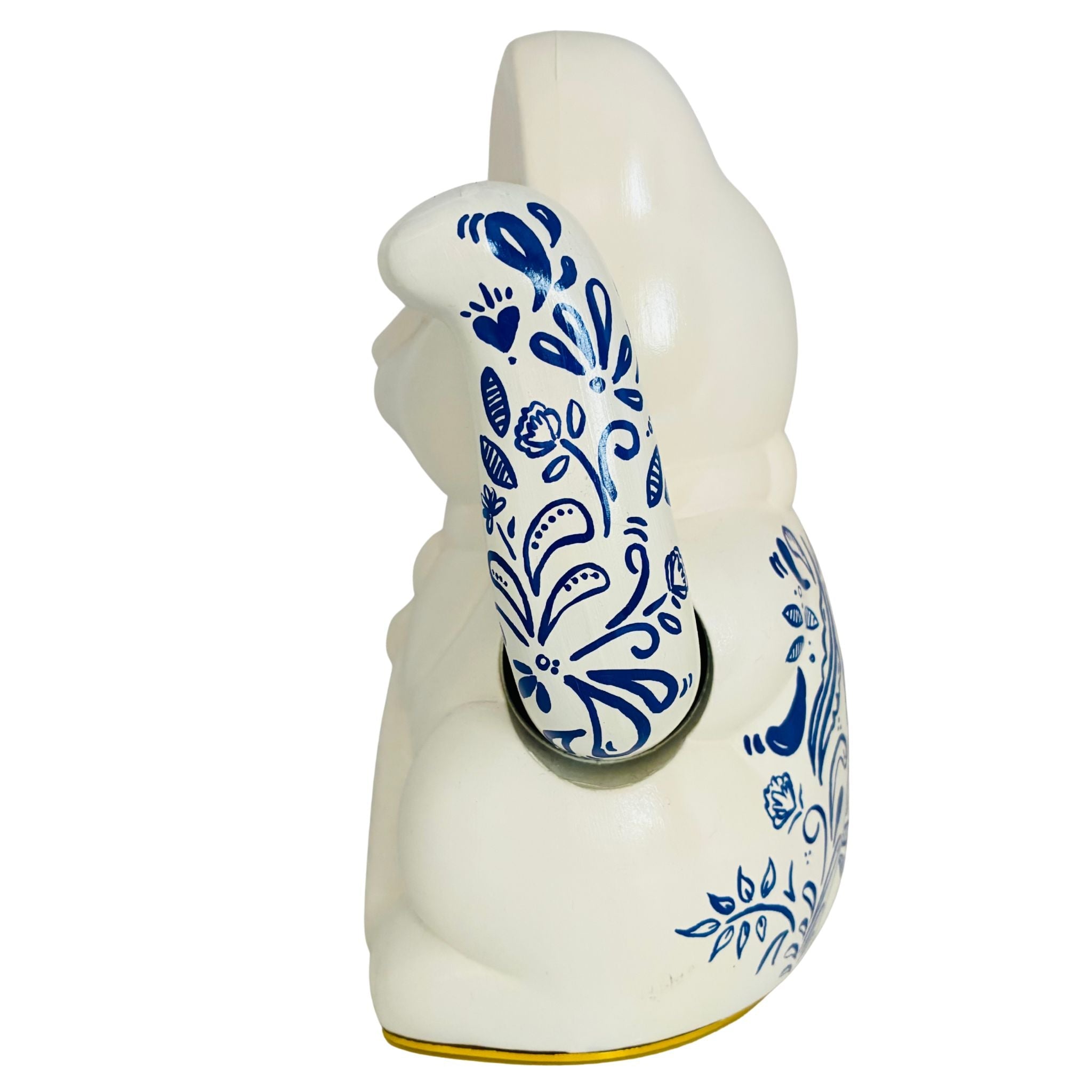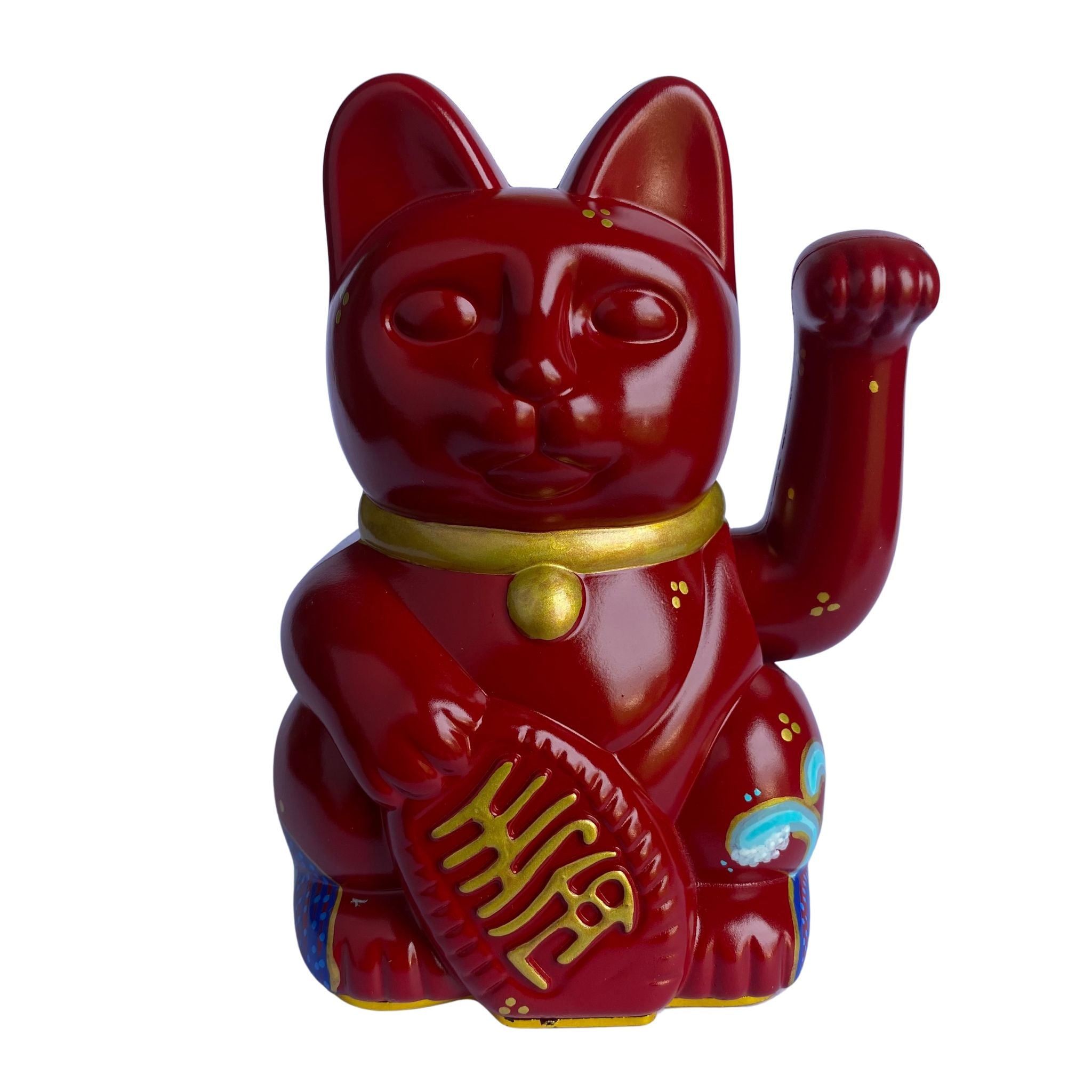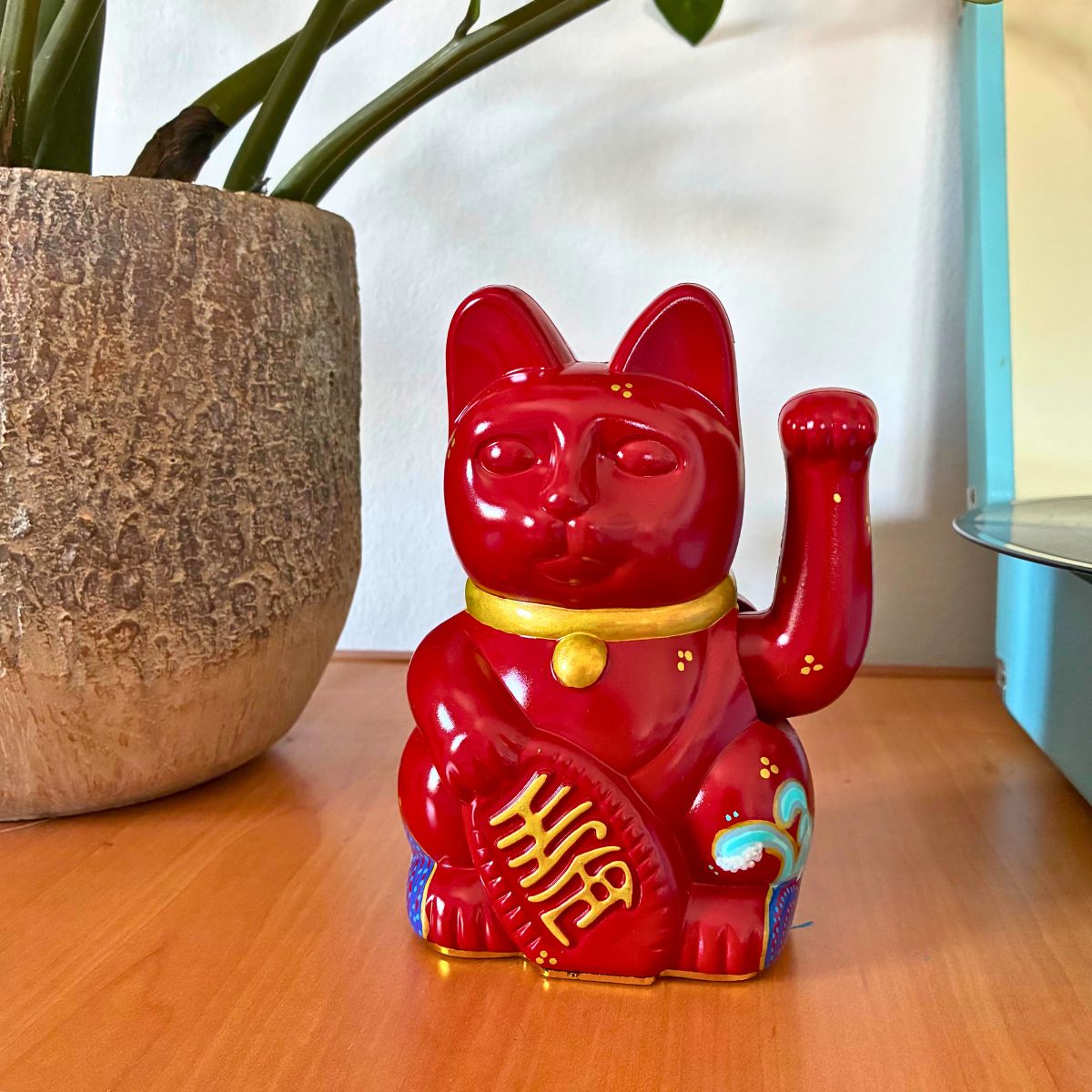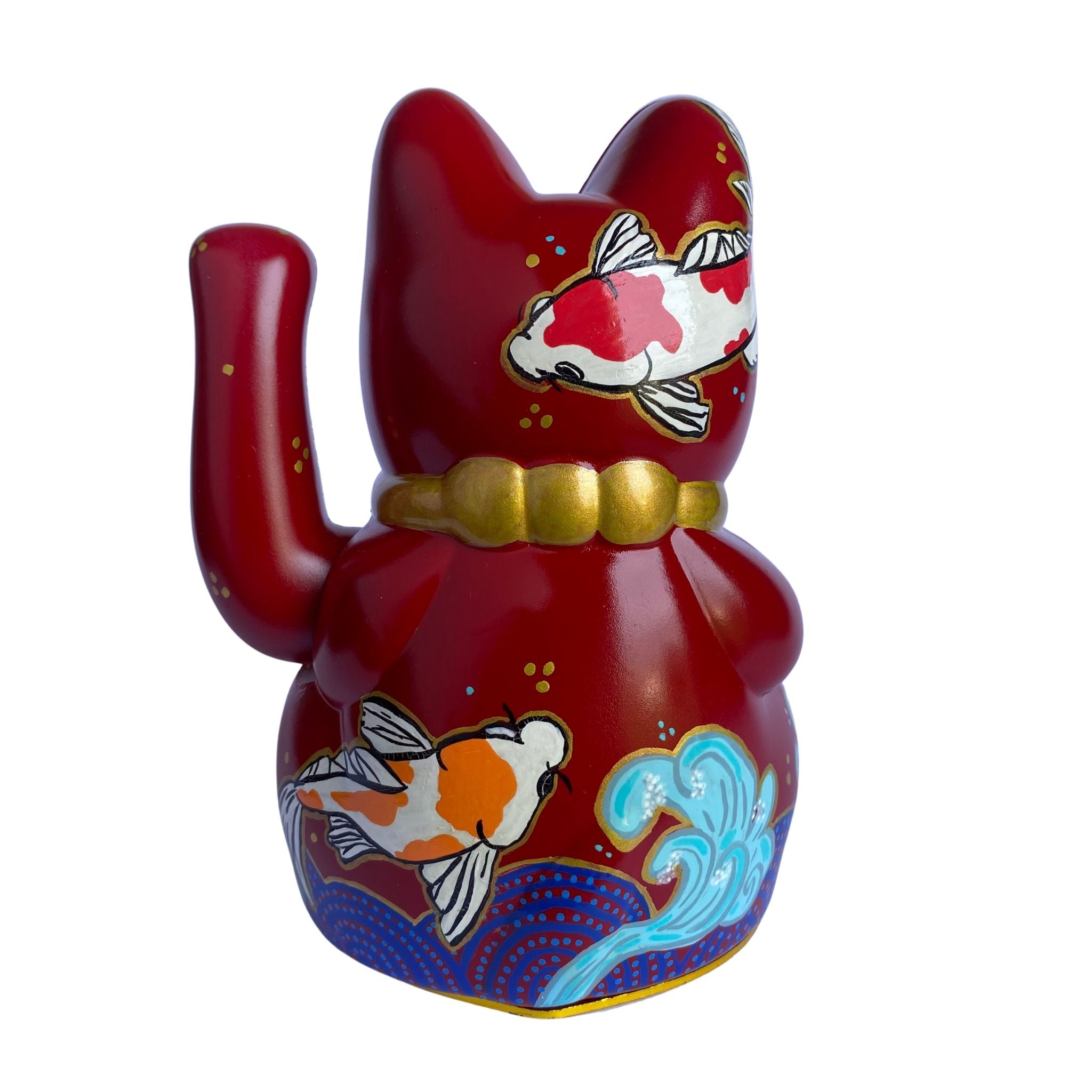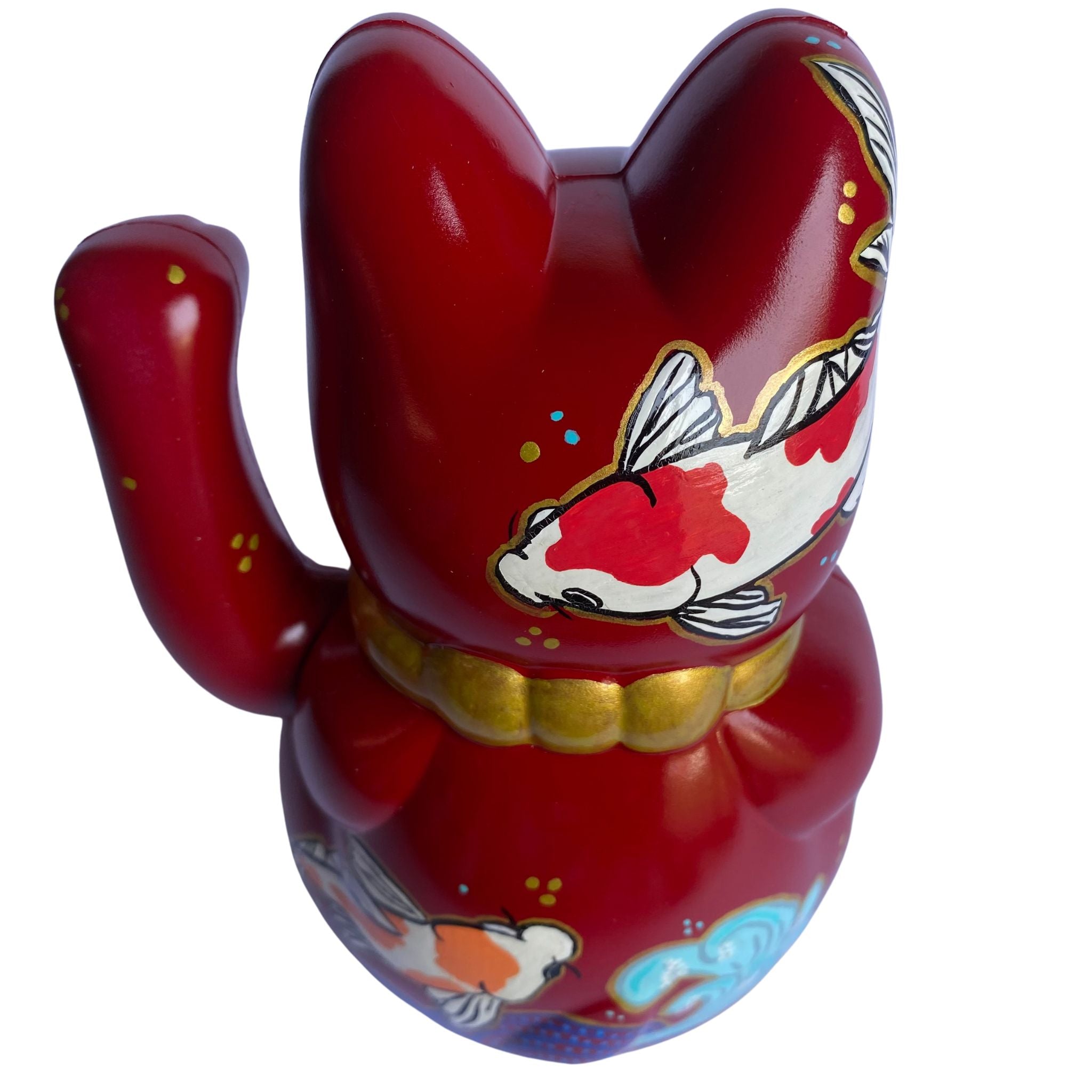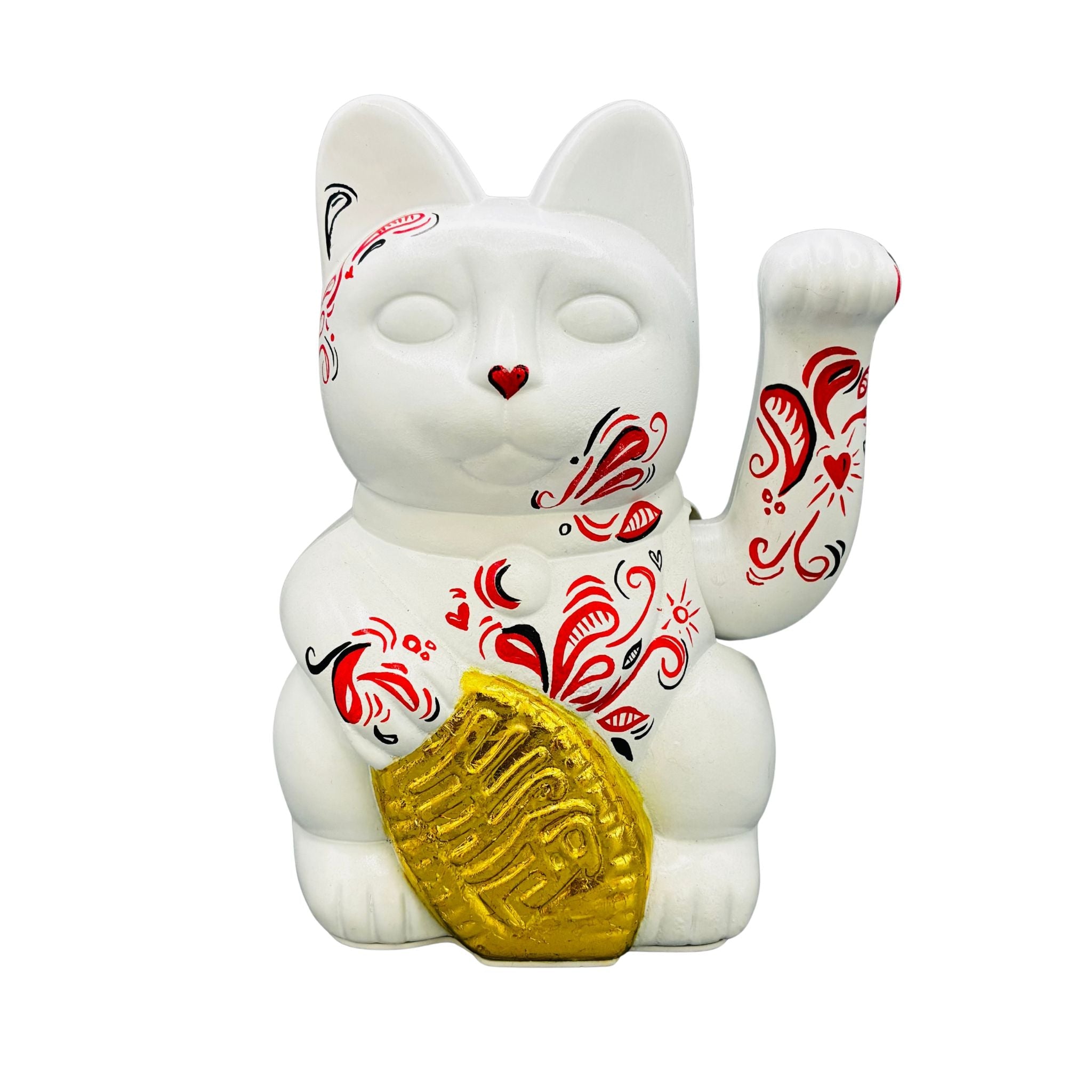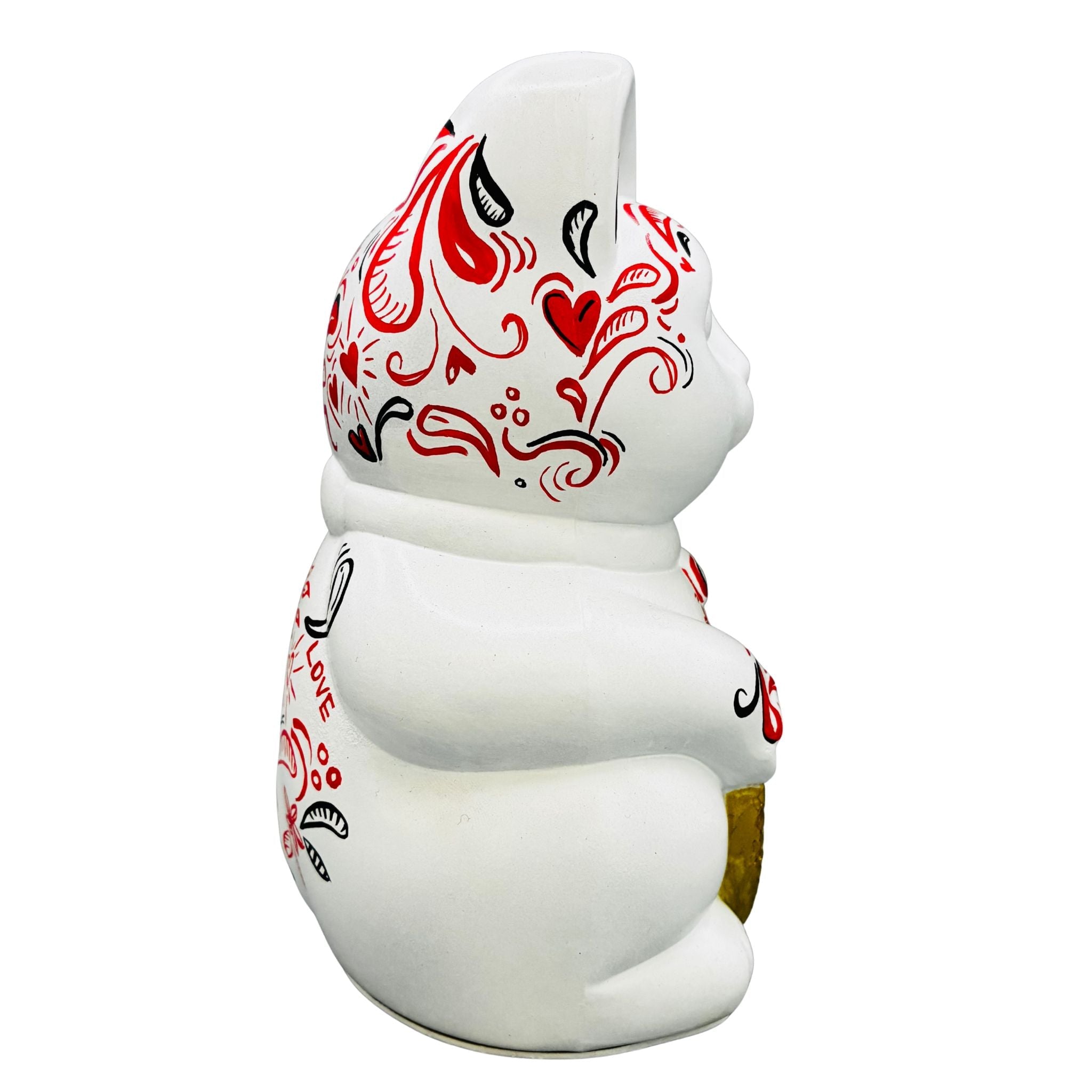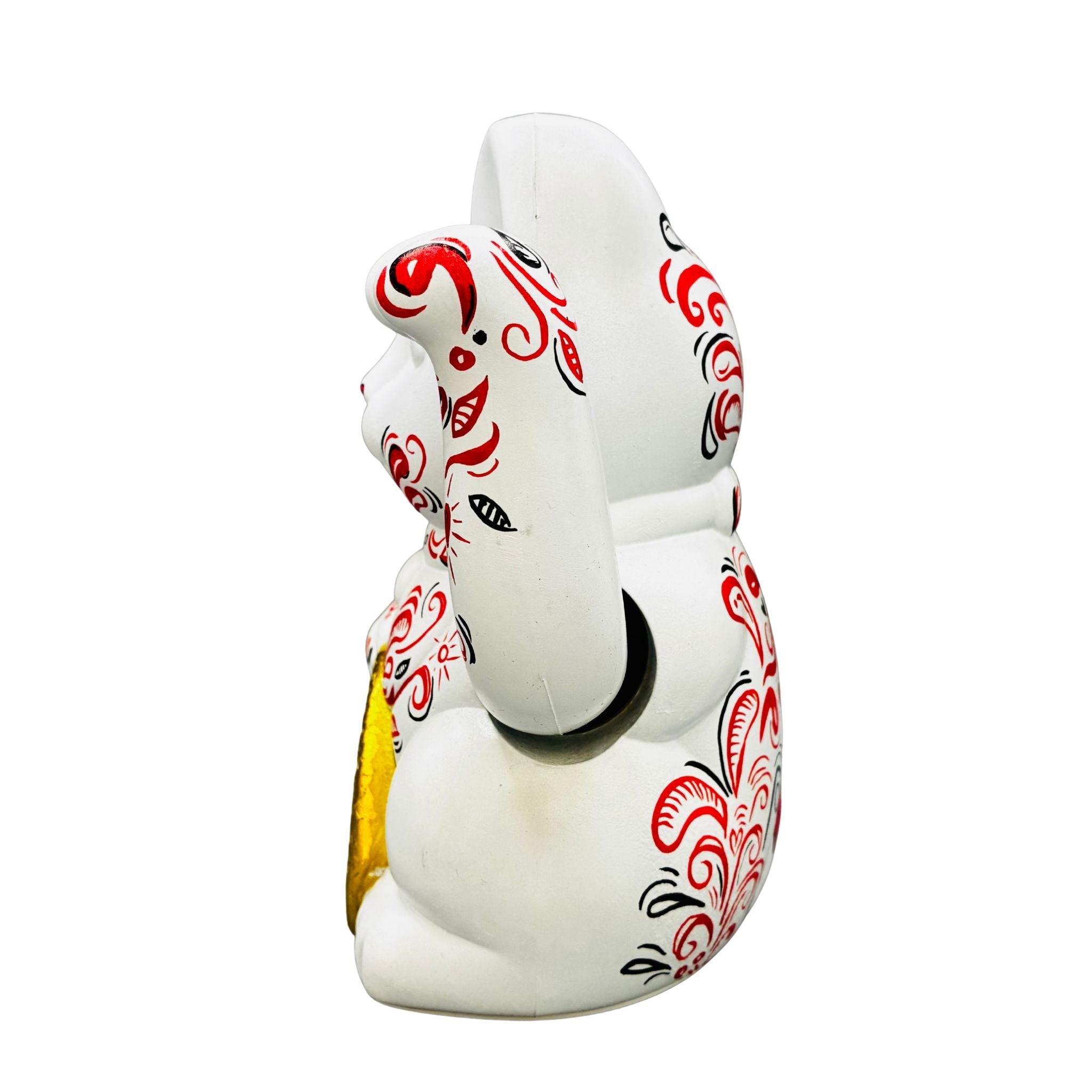The Maneki-Neko, or lucky cat, is a widely recognized symbol of good fortune and prosperity originating from Japan. It holds significant cultural value, representing not only luck but also generosity and protection. Its raised paw, colors, and accessories each carry distinct meanings that convey specific wishes such as happiness, wealth, or safety.
Beyond superstition, the Maneki-Neko embodies cultural ideals that resonate with kindness and well-being. The cat’s enduring popularity is reflected in its frequent appearances in popular culture, from anime to public spaces, showing how traditional symbols continue to influence modern society.
Origins and History of Maneki-Neko
The Maneki-Neko has deep cultural roots in Japan, with its history shaped by social changes and religious beliefs over time. It gained popularity through stories and rituals, which helped establish its role as a symbol of luck and prosperity.
Historical Roots in Japan
The exact origin of Maneki-Neko remains unclear, but it emerged during Japan’s Edo period (1603-1868). It was widely embraced among merchants and commoners, who believed it could attract wealth and good fortune.
Early Maneki-Neko figurines were crafted from clay and featured a Japanese Bobtail cat with one raised paw. This gesture was understood as a welcoming sign. The practice reflects Japan’s broader tradition of talismans used for protection and luck.
Development Over Centuries
Over time, the Maneki-Neko evolved from simple figurines into various styles with different colors, each representing specific kinds of luck, such as financial success or protection from illness.
The production spread beyond ceramics, incorporating plastic and metal materials. Its placement expanded from homes and shops in Japan to international businesses, especially in East Asia and later worldwide.
Mechanized versions with moving paws appeared, symbolizing continuous beckoning. This development enhanced Maneki-Neko’s cultural presence as a popular and accessible good luck charm.
Legends and Folklore
Several legends explain the Maneki-Neko’s significance. One famous story involves a cat at Gotokuji Temple in Tokyo. The cat allegedly saved a samurai from danger by beckoning him inside a temple just before a lightning strike.
Other tales link the cat to Imado pottery, where a woman crafted the first Maneki-Neko statue from clay to pray for better fortune. These stories underline themes of protection and hope, reinforcing the cat’s symbolism across generations.
Symbolism and Meanings
Maneki-Neko carry distinct meanings based on physical traits and colors. Their posture and accessories also provide clues about the type of fortune or protection they represent.
Interpretation of Raised Paws
Maneki-Neko can raise either the left paw, right paw, or sometimes both. A raised left paw is traditionally believed to attract customers or people, making it common in businesses.
A raised right paw is thought to invite wealth and good fortune. When both paws are raised, it symbolizes protection over both people and money, although some consider it less effective due to the gesture appearing overly welcoming.
The height of the raised paw may also affect the strength of its beckoning. A higher paw implies a stronger call for luck or prosperity.
Significance of Colors
Each color of the Maneki-Neko represents different blessings or protective qualities. The most common colors include:
| Color | Meaning |
|---|---|
| White | Happiness and purity |
| Gold | Wealth and prosperity |
| Black | Protection from evil spirits |
| Red | Protection from illness |
| Pink | Love and romance |
| Calico | Traditional, overall good luck |
Color choice often reflects the owner’s specific wish, whether it be for financial success, health, or love.
Traditional Accessories
Maneki-Neko often hold or wear items that enhance their symbolism. A koban coin, an oval Edo-period gold coin, symbolizes wealth and good fortune. The coin usually bears the inscription “sen man ryou,” which means 10 million gold pieces.
Many Maneki-Neko wear a red collar with a bell. The bell was historically used to protect cats from harm and by extension is believed to protect the owner.
Other common accessories include bibs and decorative scarves, signifying care and nurturing, which further enhance the cat’s power to attract positive energy.
Role in Japanese Culture
The Maneki-Neko holds a practical and symbolic place in Japanese society. It appears in everyday environments, businesses, and cultural events, serving as a token of luck and prosperity. Its presence is intentional, reflecting trust in its ability to attract positive outcomes.
Representation in Daily Life
Maneki-Neko figurines are common in Japanese homes, often placed near entrances or windows. They are believed to invite good fortune and protect the household from misfortune.
The cat’s raised paw is significant: the left paw is thought to attract customers or people, while the right paw invites wealth and good luck. Color variations carry different meanings, like white for purity or gold for prosperity.
Besides decoration, some families see the Maneki-Neko as a guardian figure that brings balance and peace in daily routines. Its design, rooted in historical traditions, continues to connect people with cultural heritage.
Use in Businesses and Homes
Business owners frequently display Maneki-Neko at storefronts or cash registers. It symbolizes the hope for increased customers and financial success.
The position and color of the cat can vary by business type. For example:
| Paw Raised | Meaning |
|---|---|
| Left | Attracts customers |
| Right | Brings money and wealth |
| Color | Meaning |
|---|---|
| Gold | Wealth and prosperity |
| White | Happiness and purity |
| Black | Protection from evil |
In homes, Maneki-Neko also serves a similar purpose. It invites good fortune into the family’s life, often combined with other traditional charms or talismans.
Presence in Festivals
Maneki-Neko appears in certain Japanese festivals, where it is celebrated as a cultural and spiritual symbol. Temples such as Gotokuji hold events honoring its origins and impact.
During festivals, large Maneki-Neko statues or themed decorations are displayed to attract visitors and spread positive energy. These gatherings often include ceremonies where the figurines are blessed, reinforcing their role as lucky charms.
The cat’s image is also incorporated into festival goods, crafts, and souvenirs. This continuous presence at public events strengthens its status beyond just a decorative item.
Maneki-Neko in Popular Culture
The Maneki-Neko’s presence extends beyond traditional settings into various media, merchandise, and art forms. Its image is adapted and reinterpreted, reflecting shifts in cultural trends and consumer interests while maintaining its symbolic essence.
Appearances in Media
Maneki-Neko has appeared in films, television shows, and video games, often as a symbol of luck or prosperity. In Japanese anime and manga, it is sometimes featured as a character or motif, reinforcing its cultural role.
Internationally, it appears in scenes depicting Asian culture or businesses. The figurine’s raised paw often conveys a sense of welcome or fortune to audiences globally.
The moving or waving versions of Maneki-Neko are sometimes animated, showing its signature beckoning gesture. This reinforces the connection between the object’s traditional meaning and modern storytelling.
Inspiration for Modern Merchandise
Maneki-Neko has inspired a wide range of products beyond the classic figurines. Variations include keychains, phone cases, and gadgets. These items mix traditional symbolism with practical daily use.
Some merchandise integrates motorized arms for continuous waving, blending tradition with technology. The color variations also influence product design, each carrying a specific meaning like wealth or health.
Brands sometimes use Maneki-Neko imagery in advertising to evoke good fortune and attract customers. This ties the cultural icon to commercial success while preserving its original symbolism.
Artistic Depictions
Artists reinterpret Maneki-Neko across various mediums, including painting, sculpture, and digital art. These works explore different styles, from realistic to abstract, often emphasizing the cat's symbolic paw gesture.
Cultural exhibitions sometimes feature Maneki-Neko art to highlight Japanese folklore. Contemporary artists may incorporate the figure to comment on luck, prosperity, or consumer culture.
Traditional craft techniques, such as Imado pottery, continue to produce Maneki-neko, blending folklore with artistic heritage. This creates a link between old and new cultural expressions.
Global Influence and Spread
The Maneki-Neko has traveled beyond its Japanese origins to become a widely recognized symbol of good fortune. Its presence now stretches across Asia, Western countries, and various international markets, where it often adapts to local tastes while retaining core cultural meanings.
Adoption Across Asia
The lucky cat is especially prominent in East Asia beyond Japan. In China, it is frequently used in shops and restaurants as a symbol of prosperity and positive energy. The Maneki-Neko's raised paw is believed to beckon wealth and customers, which resonates with Chinese business traditions.
In other parts of Asia such as Taiwan and South Korea, the figurine similarly appears in commercial spaces and homes for luck. The cultural exchange between these countries has helped the symbol maintain its significance, though subtle variations in design and interpretation sometimes emerge regionally.
Recognition in Western Countries
Western awareness of Maneki-Neko grew steadily during the late 20th century through increased interest in Japanese culture. It is now common to see the figurine in Asian restaurants, stores, and pop culture, often symbolizing luck and prosperity.
Collectors and enthusiasts appreciate Maneki-Neko for its artistic and cultural value. In Western markets, the cat can be both a decorative item and a collectible, sometimes detached from its original spiritual meaning but still invoked for good fortune.
Variants in International Markets
International markets have introduced new colors, materials, and styles to the Maneki-Neko, reflecting local preferences. For example, ceramic versions remain traditional, but plastic and electronic variants have become popular worldwide.
Colors often carry specific symbolism:
- White: Purity and happiness
- Gold: Wealth and prosperity
- Black: Protection from evil
Localized adaptations include cartoon-like designs or incorporation into fashion and tech accessories, extending the Maneki-Neko’s cultural reach while evolving its form.
Contemporary Significance
The Maneki-Neko remains a relevant symbol in today’s society, adapting to new cultural contexts and consumer preferences. Its role has expanded beyond traditional beliefs to include various modern interpretations and practical uses.
Modern Interpretations
In modern settings, the Maneki-Neko is often seen as a versatile symbol of good luck, wealth, and protection. Different poses and paw gestures now carry specific meanings: the right paw raised is associated with attracting money, while the left paw invites customers or people.
Colors also play a distinct role: gold represents prosperity, white signals happiness and purity, and black offers protection from evil. The figure is no longer bound strictly to spiritual or religious beliefs but is embraced widely in commercial environments and personal spaces for both symbolic and aesthetic reasons.
Collectible and Decorative Value
Today, Maneki-Neko figurines are popular collectibles globally. Tokoname City in Japan, famed for its pottery, hosts "Maneki Neko Street," where enthusiasts can find hundreds of designs from traditional ceramic to modern plastic and electronic versions. Collectors appreciate rarity, craftsmanship, and unique color variations.
Besides collecting, many people use Maneki-Neko purely as décor. It appears in homes, restaurants, and stores, where it serves as a cultural icon and a visual reminder of luck and prosperity. Its adaptability in size and materials helps it fit a wide range of interior styles.


